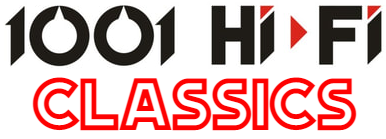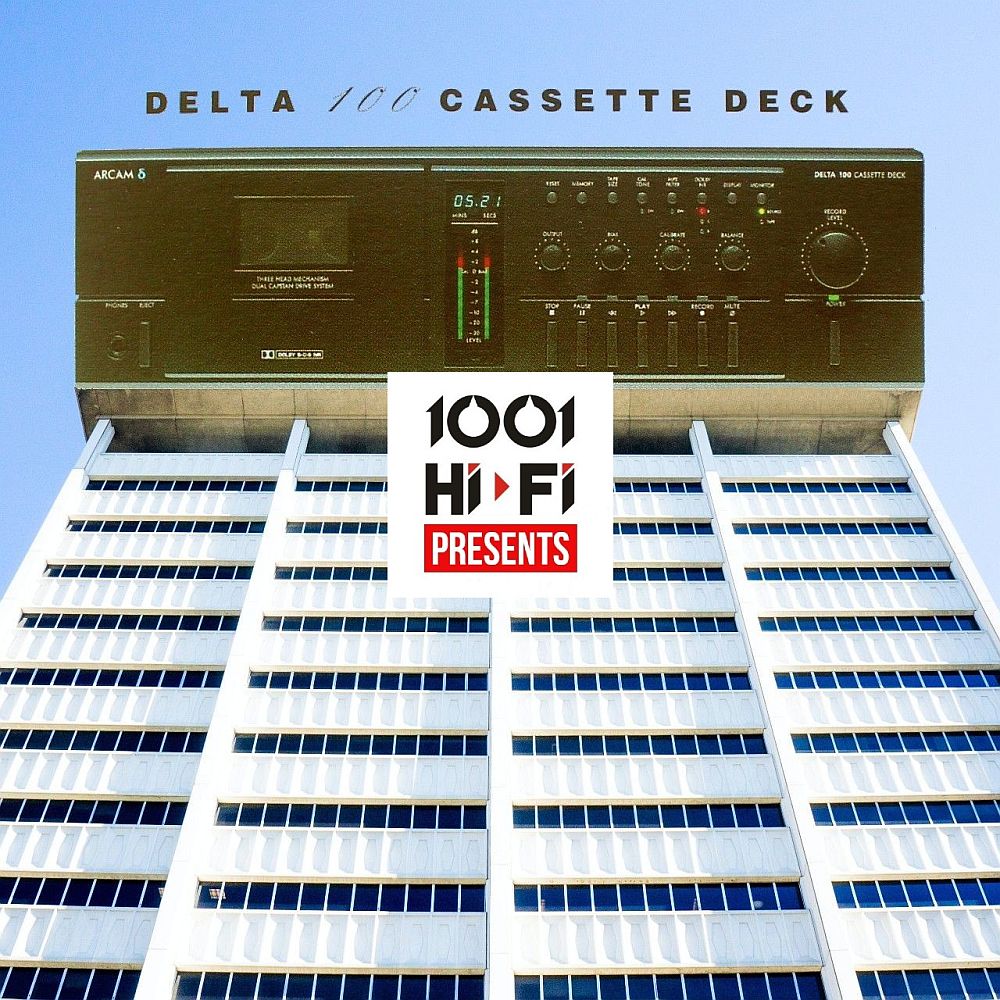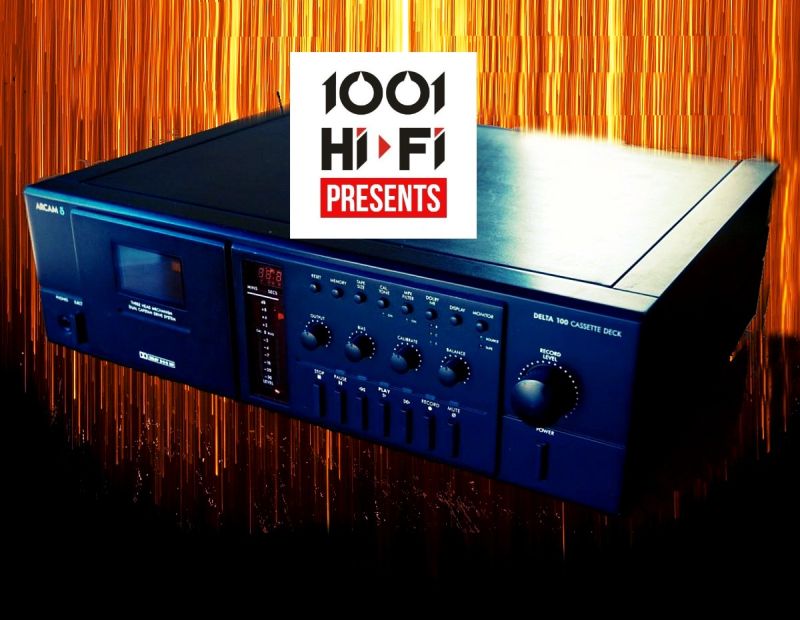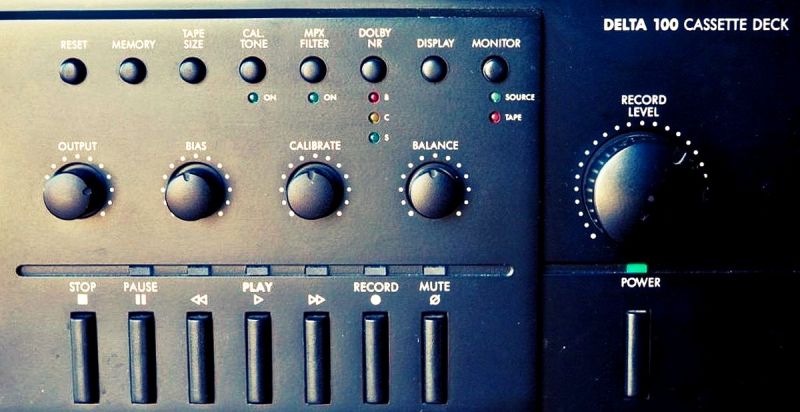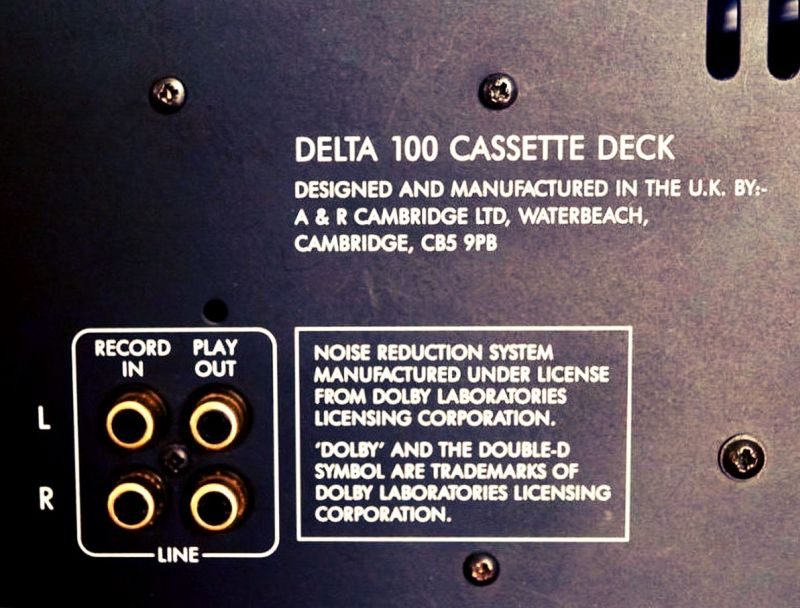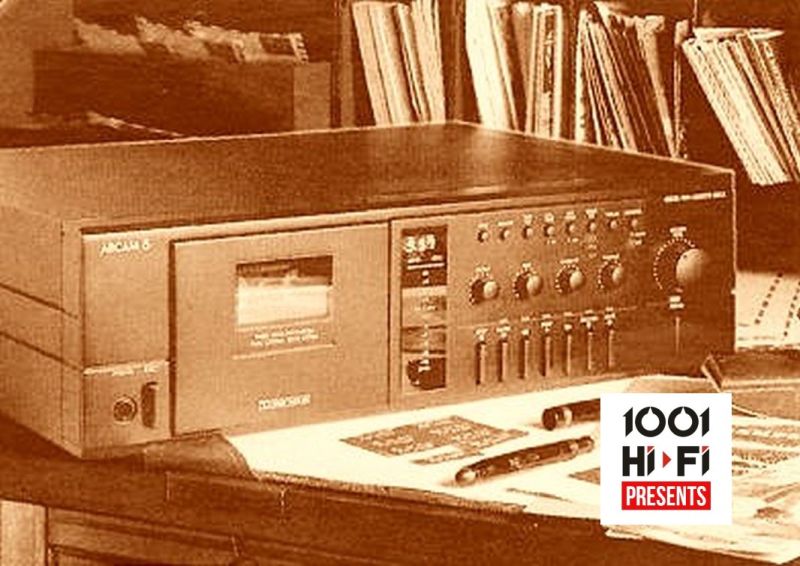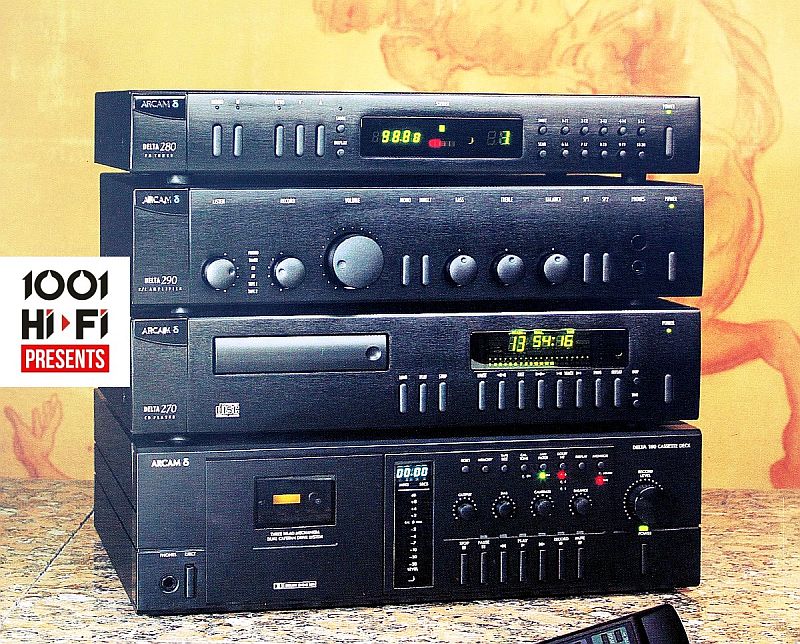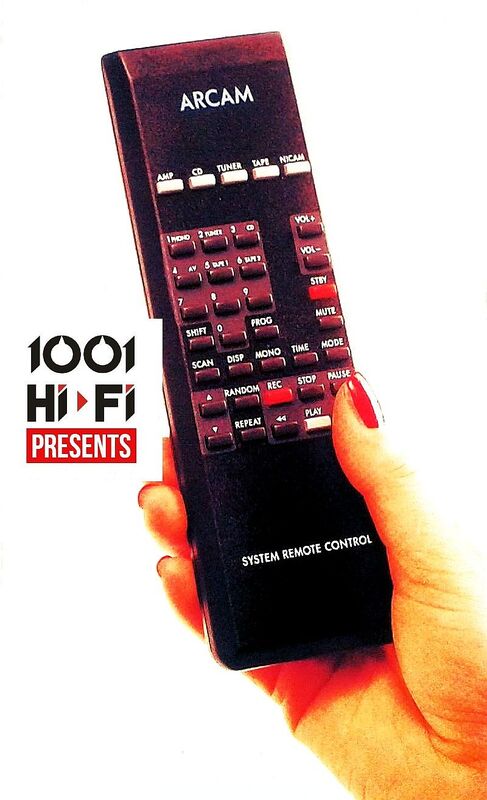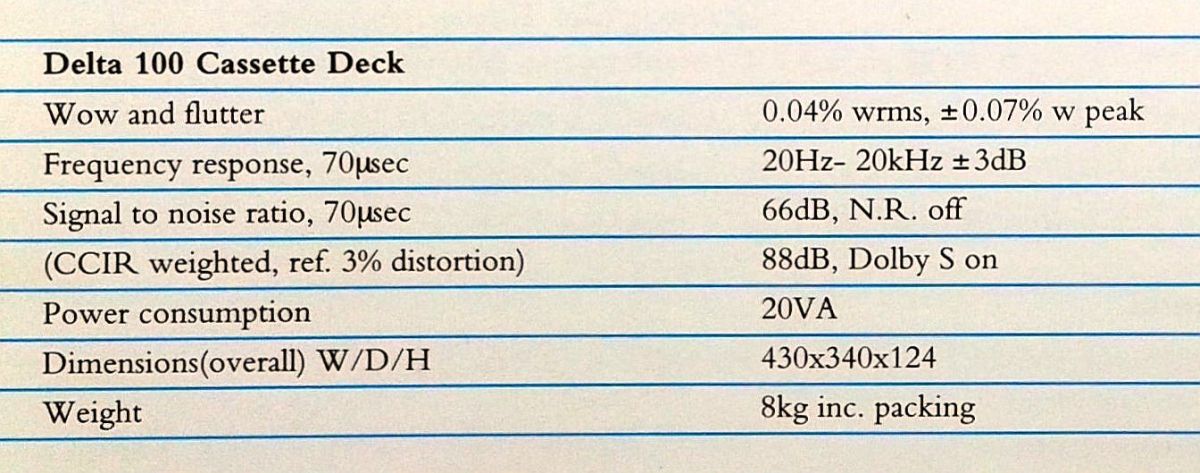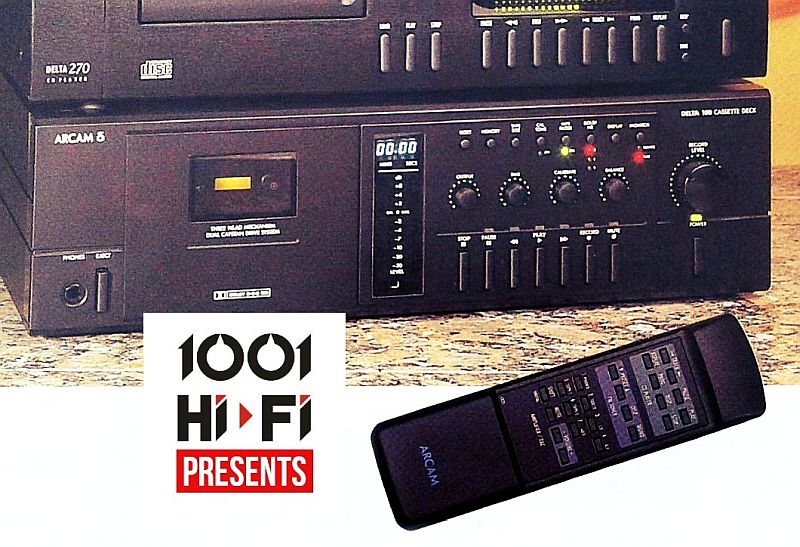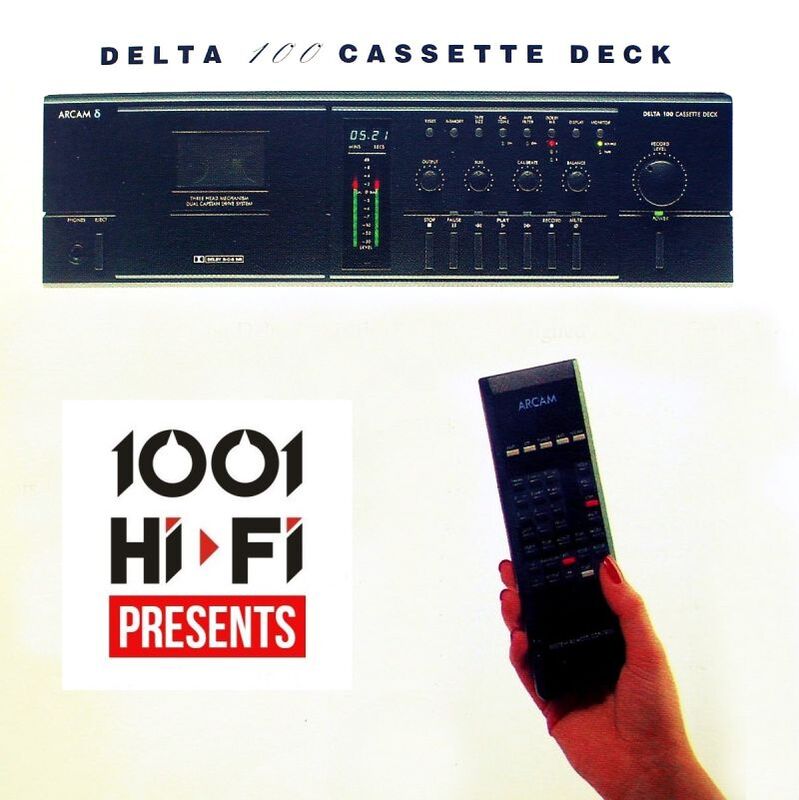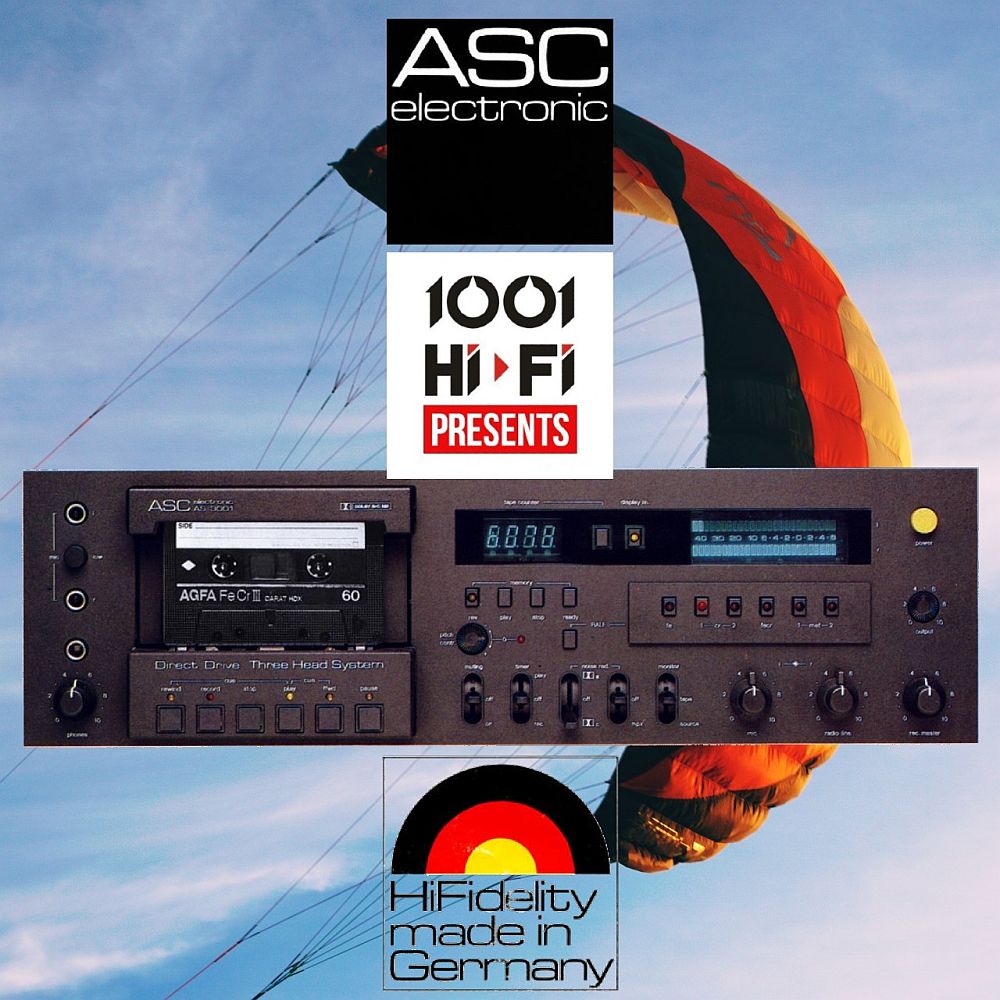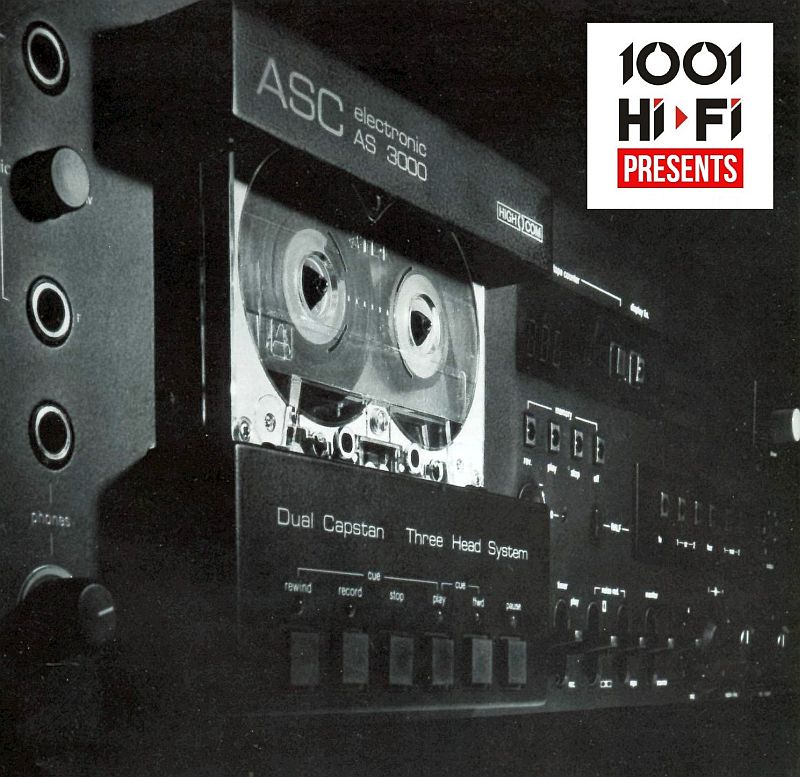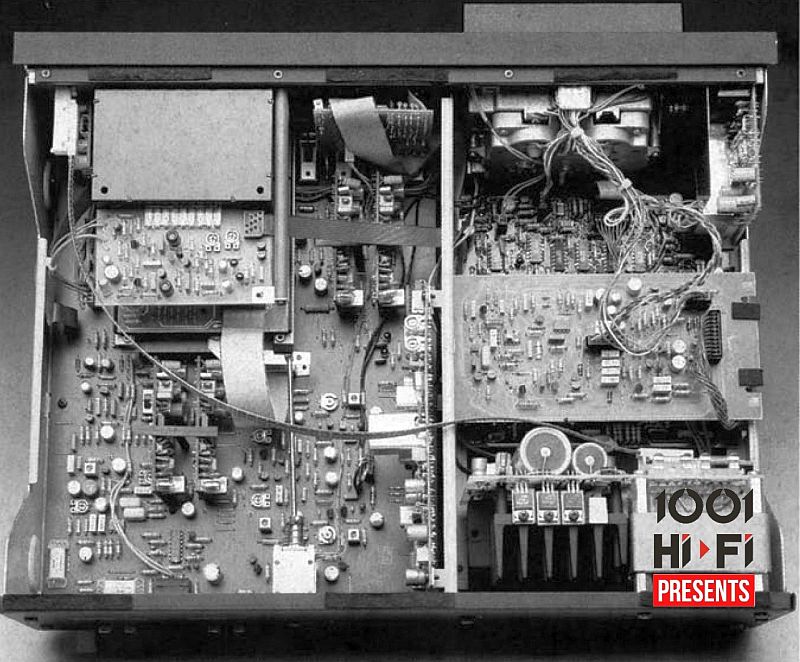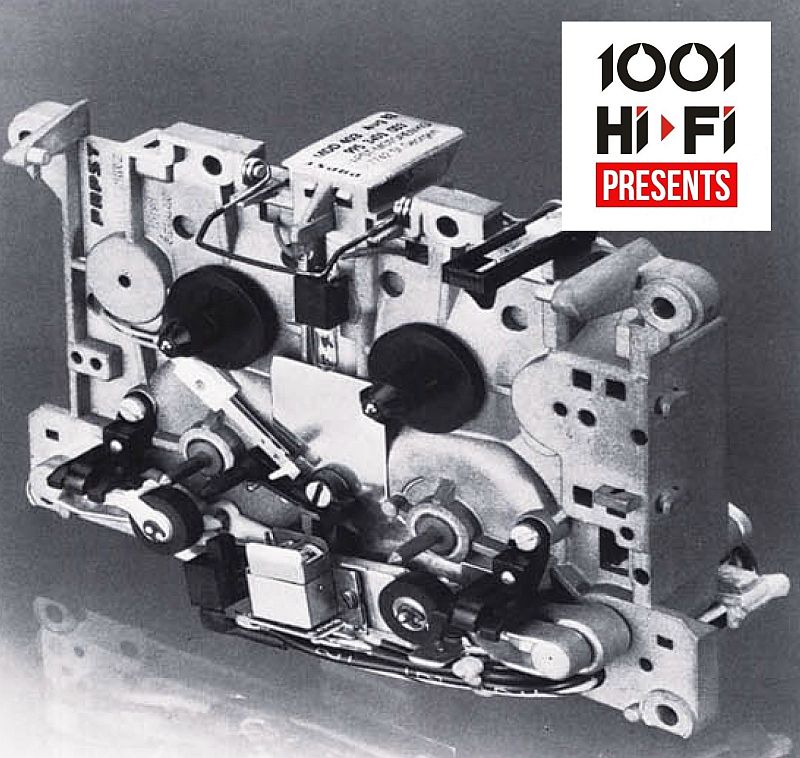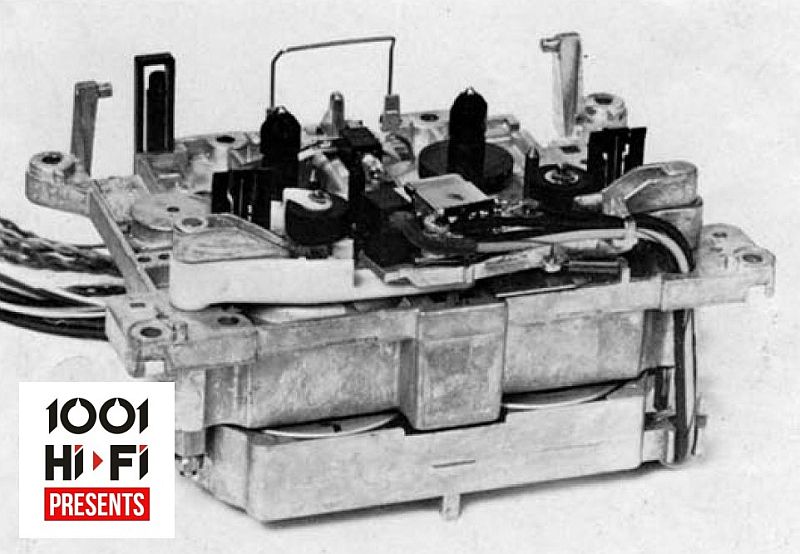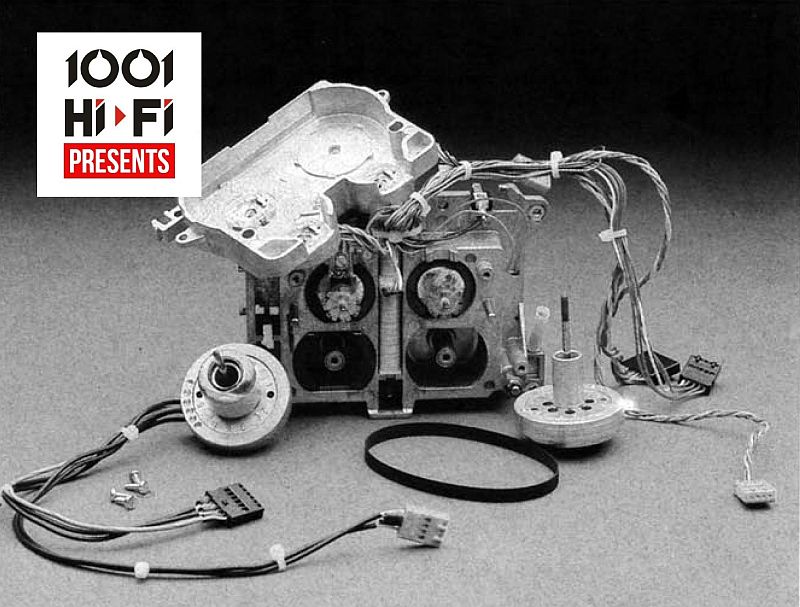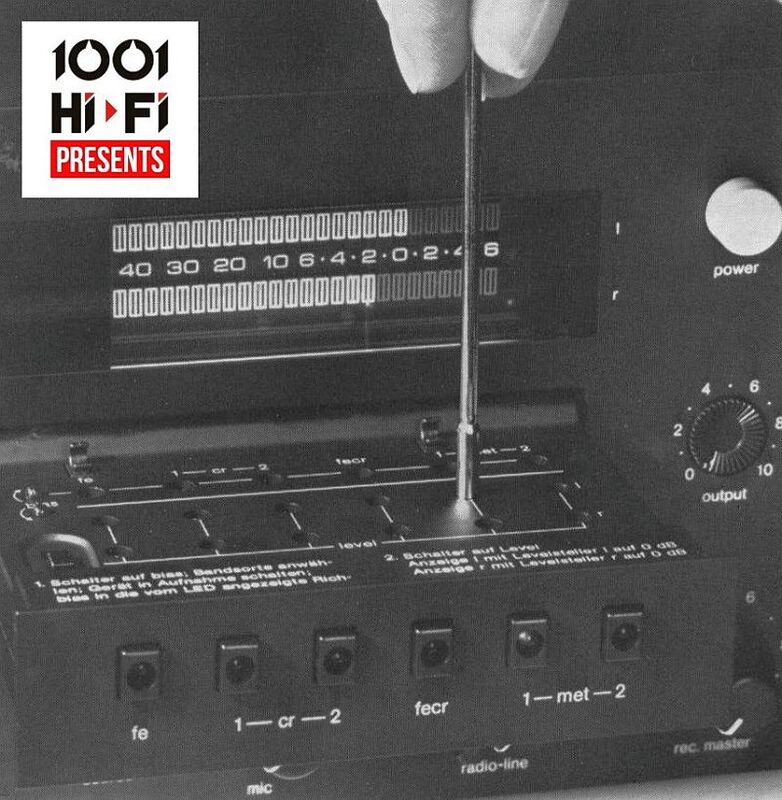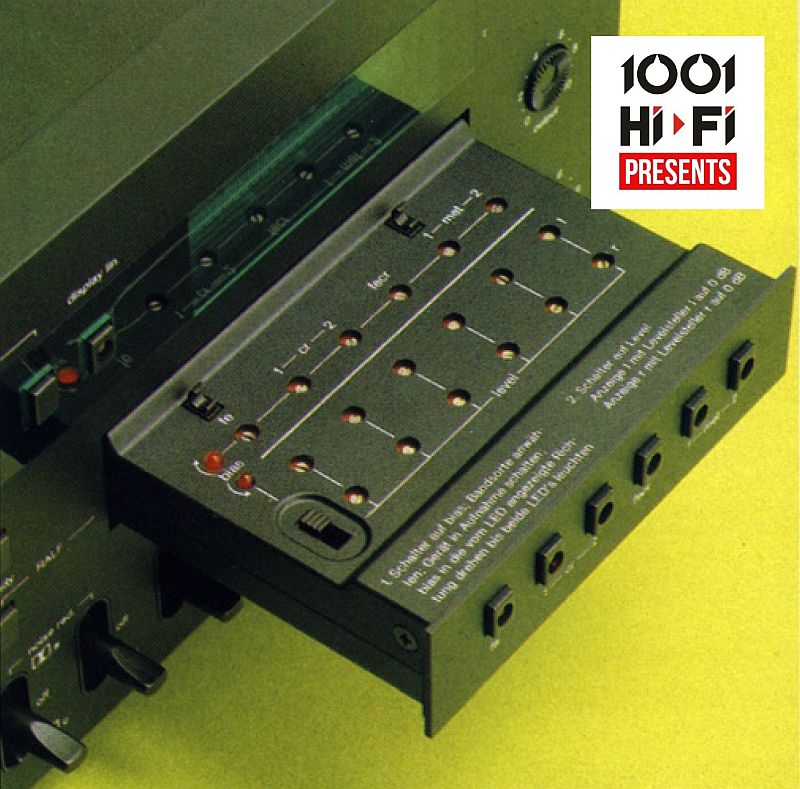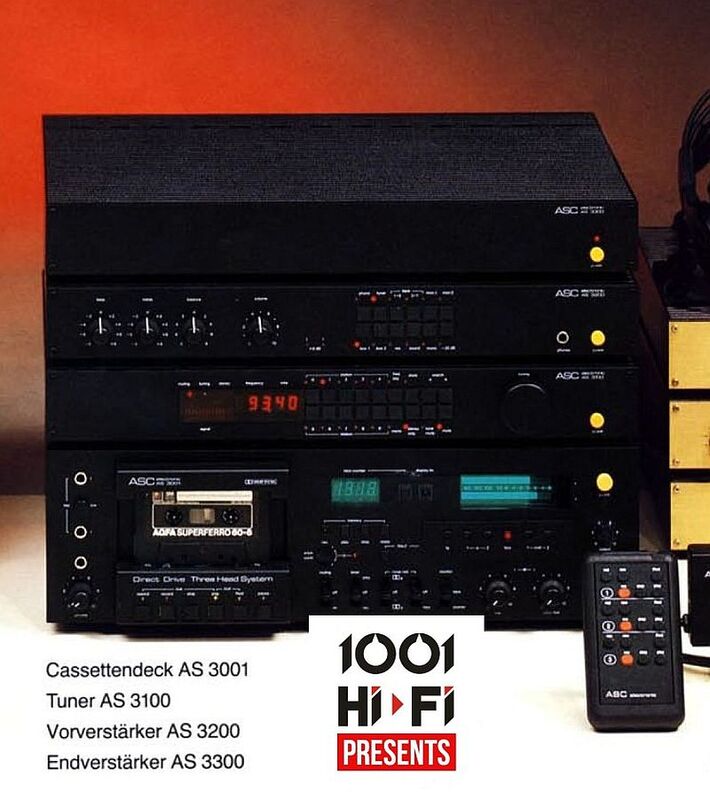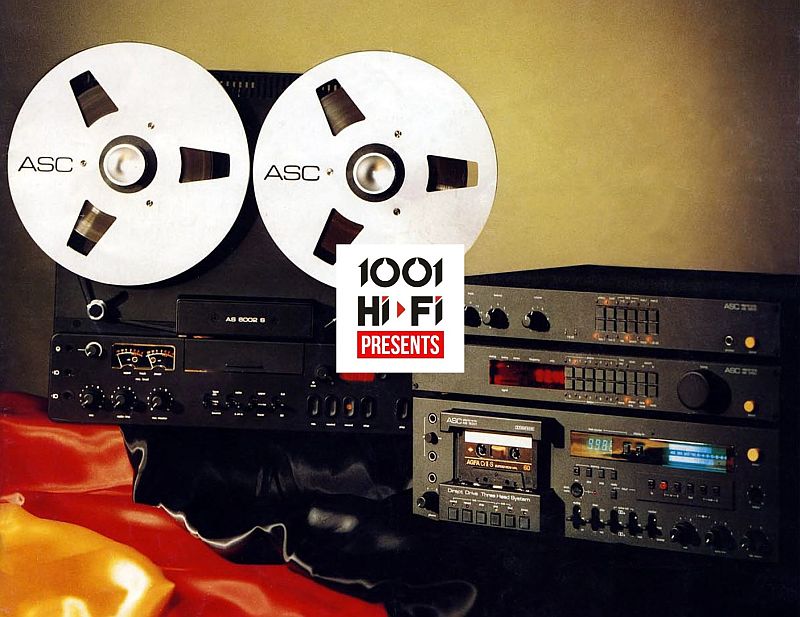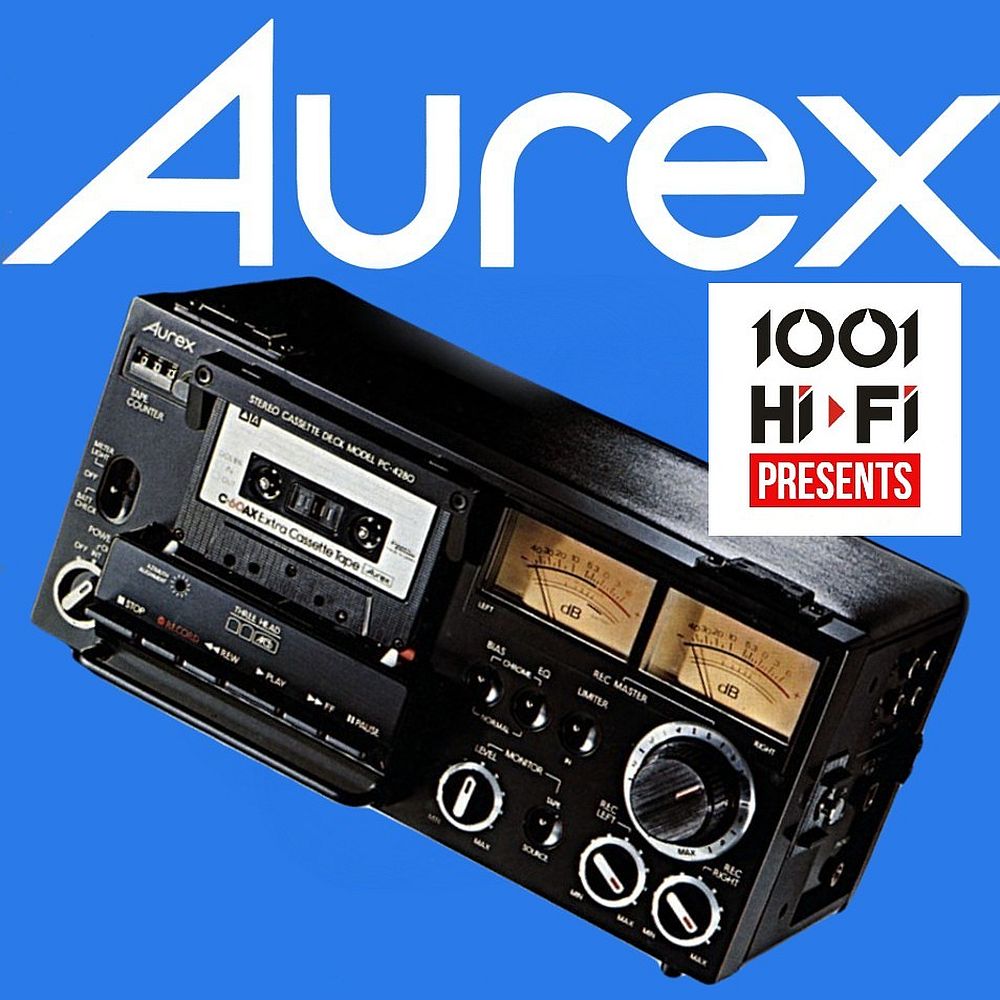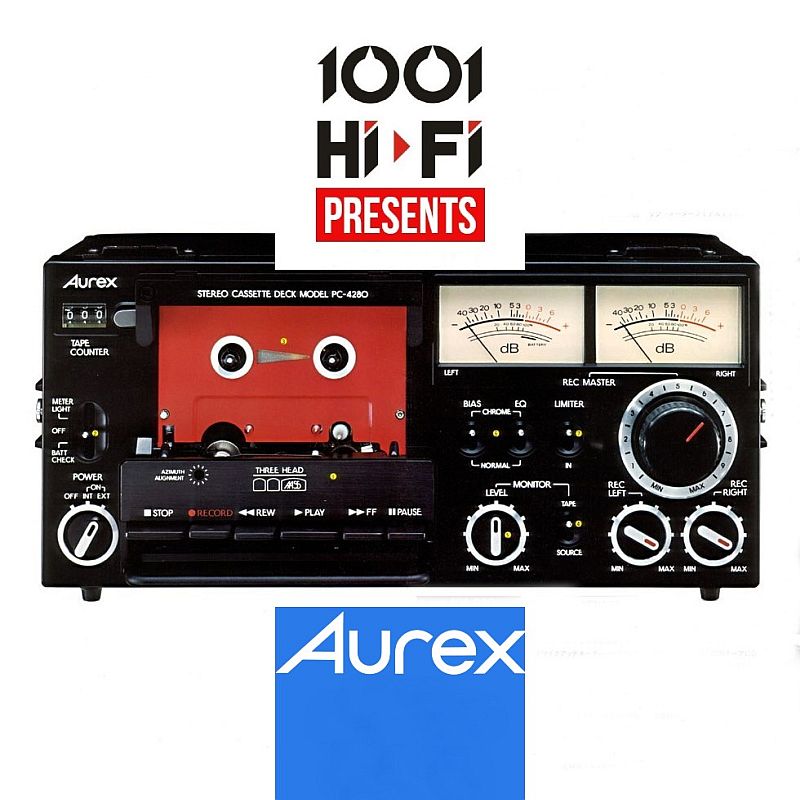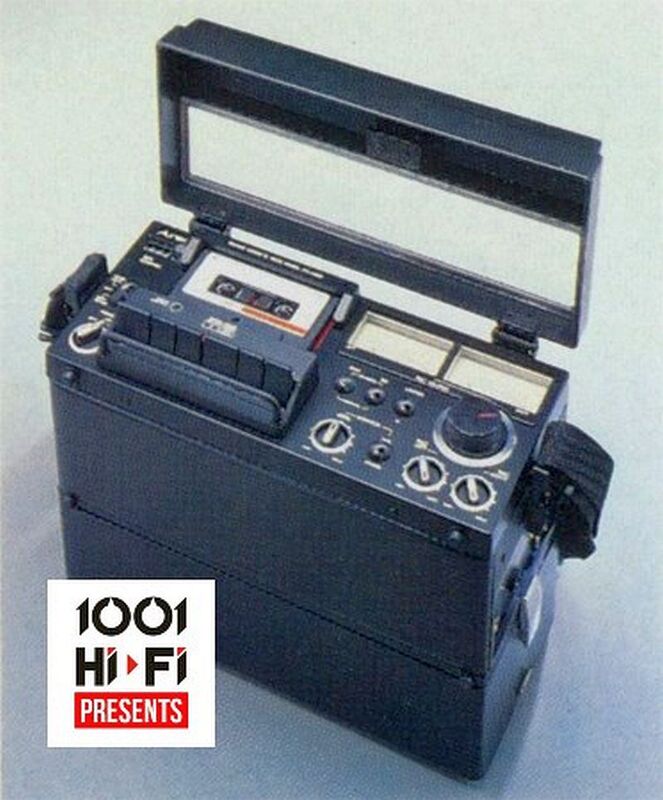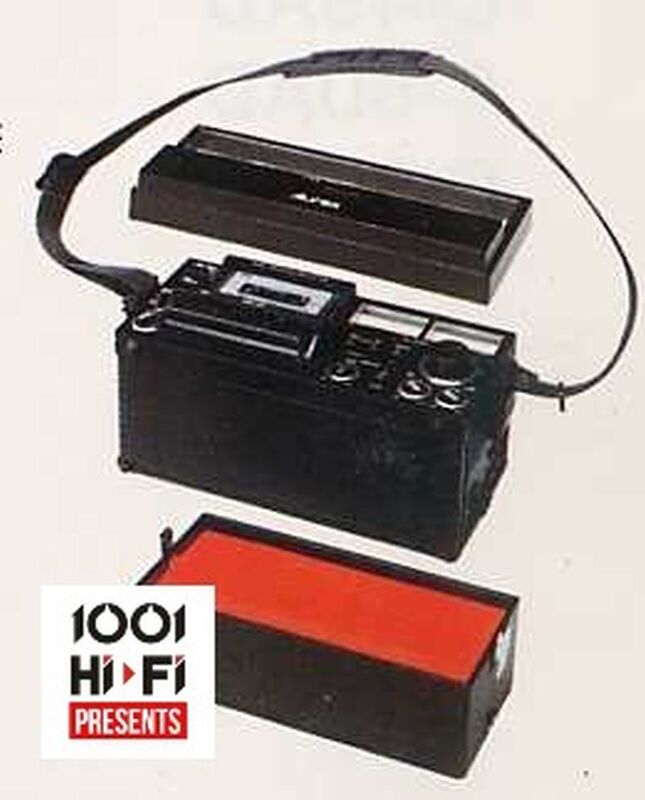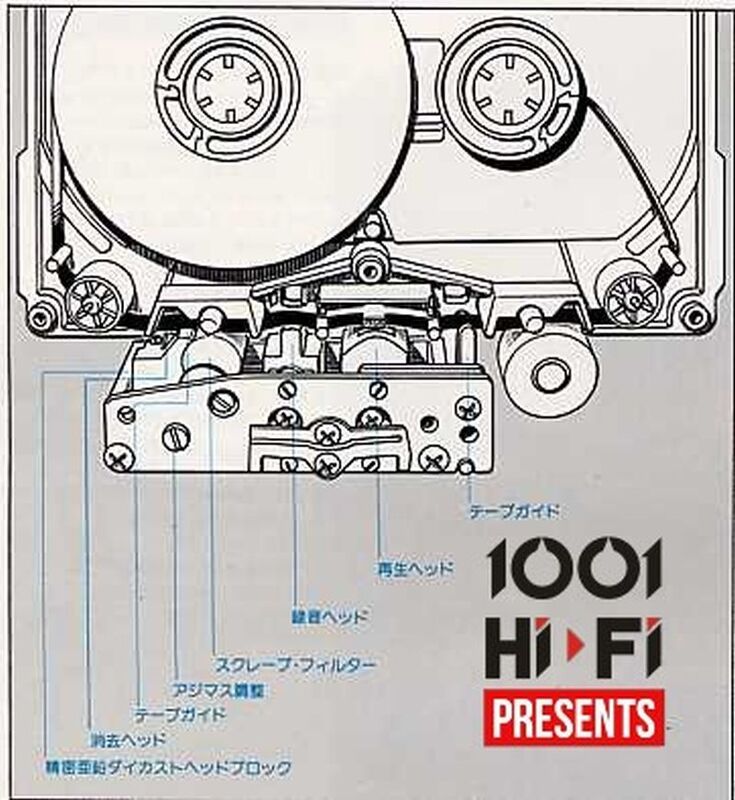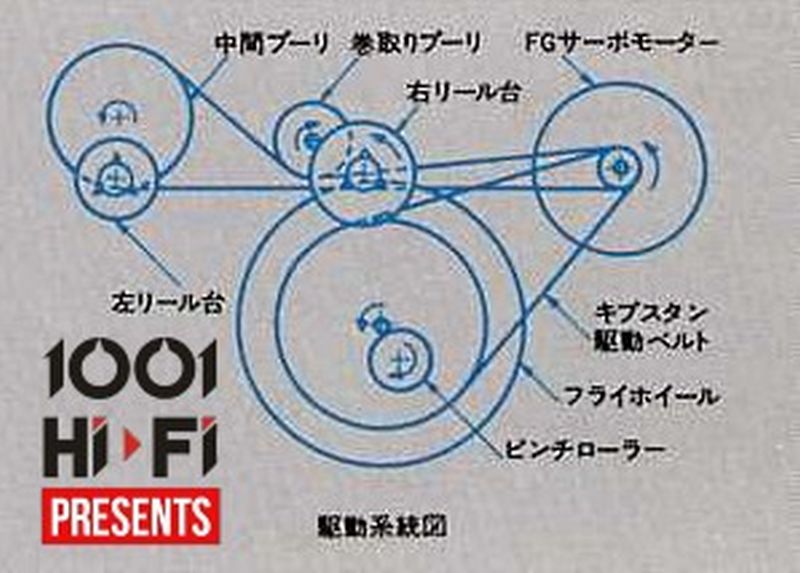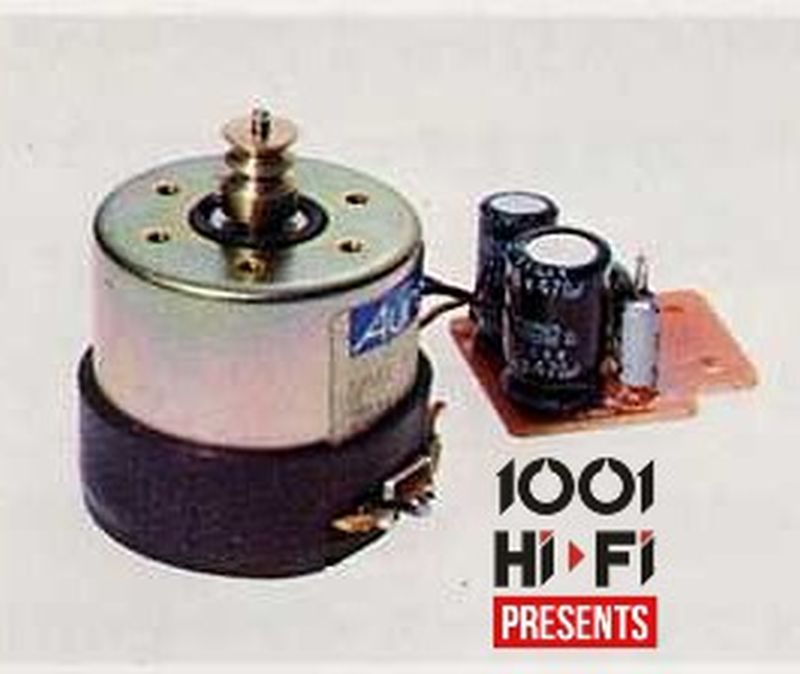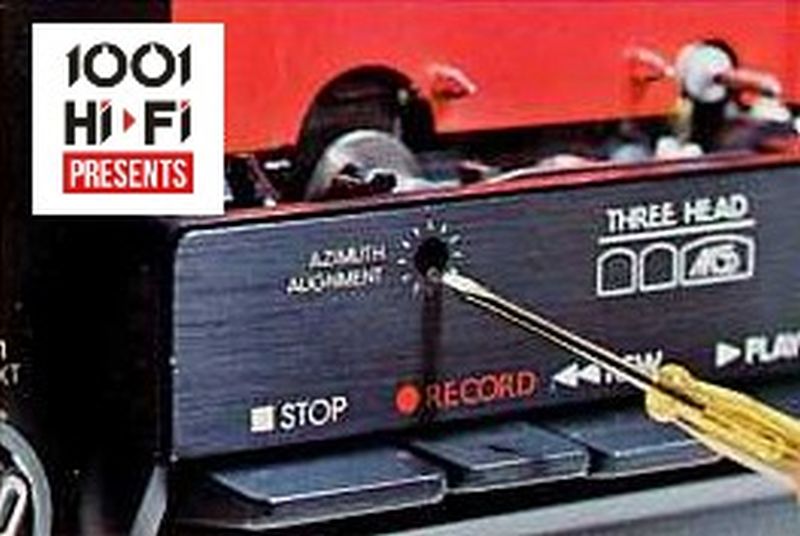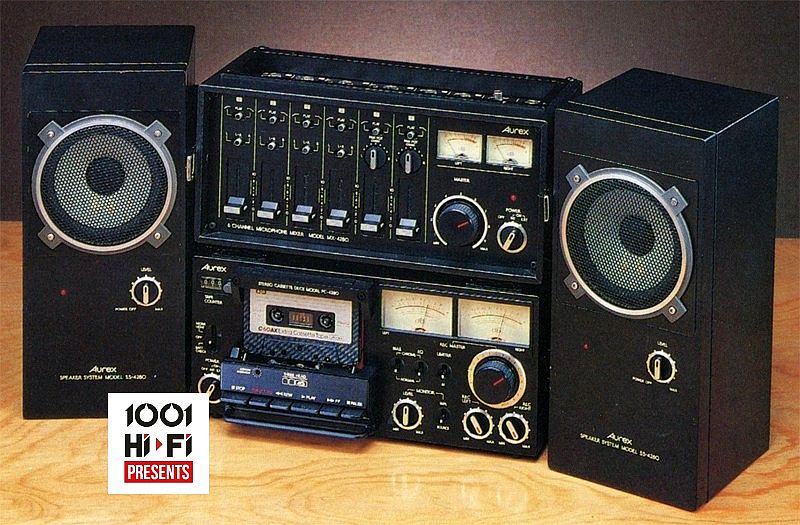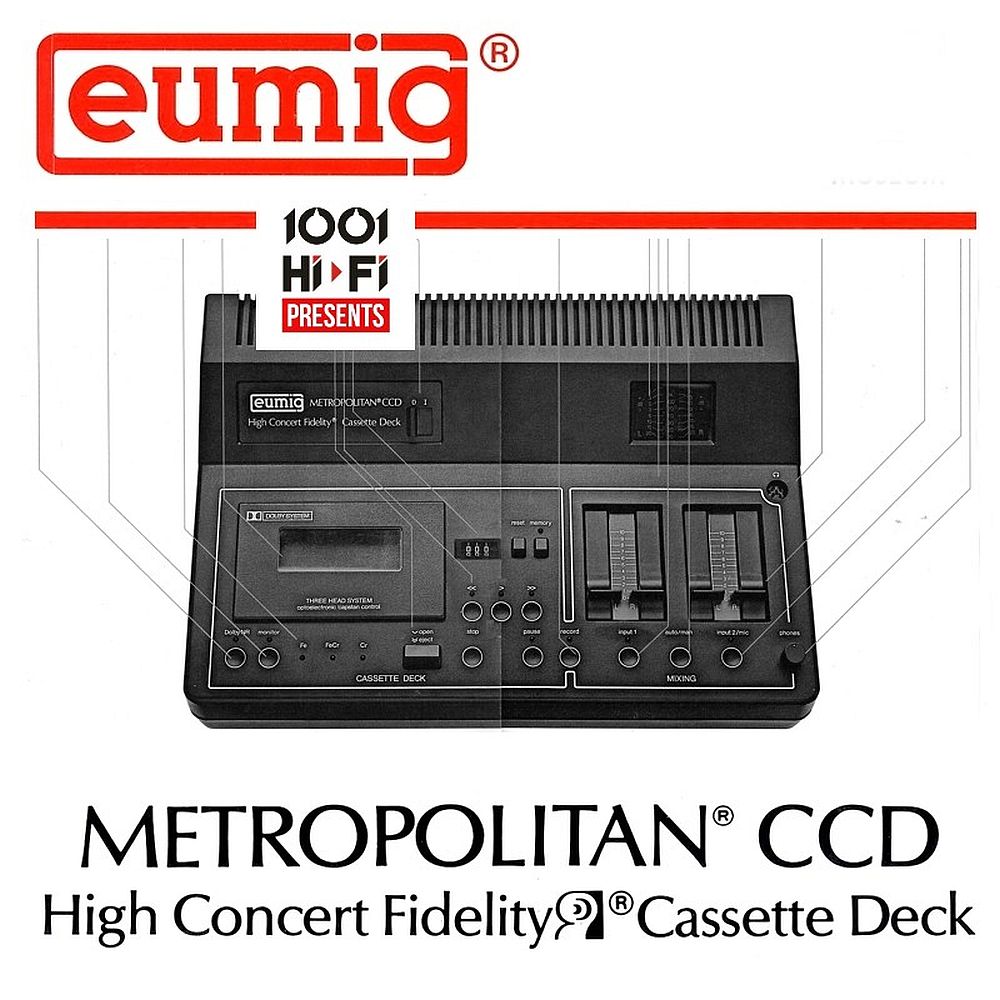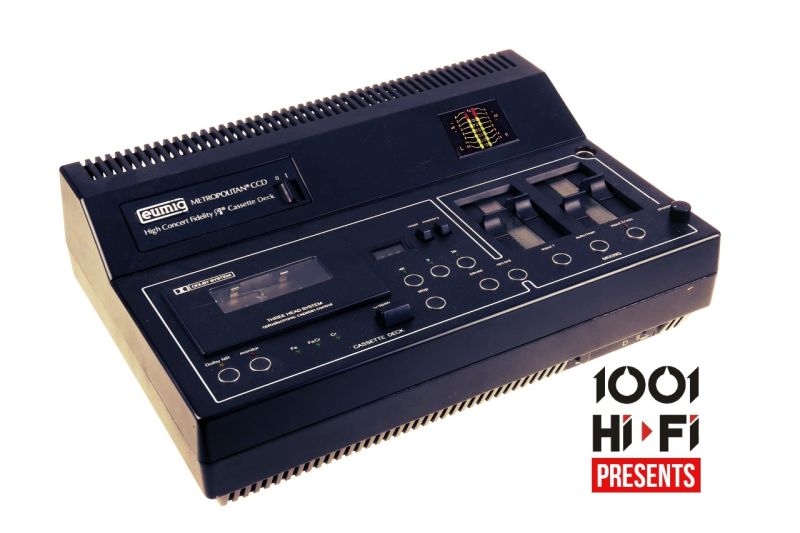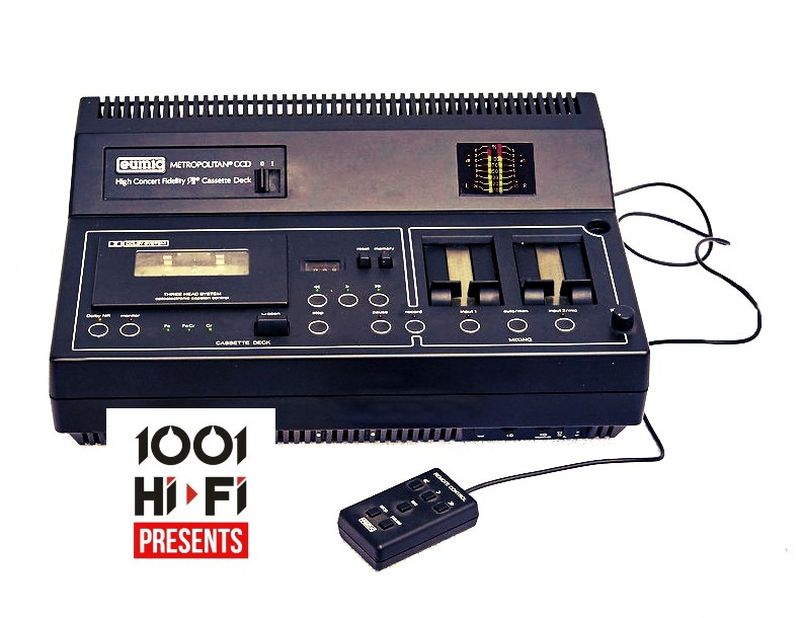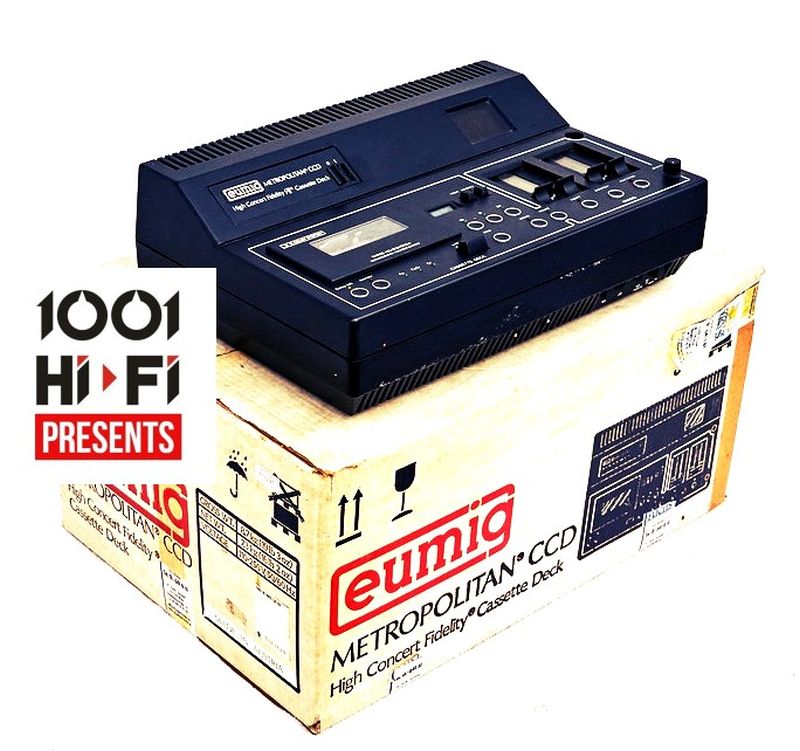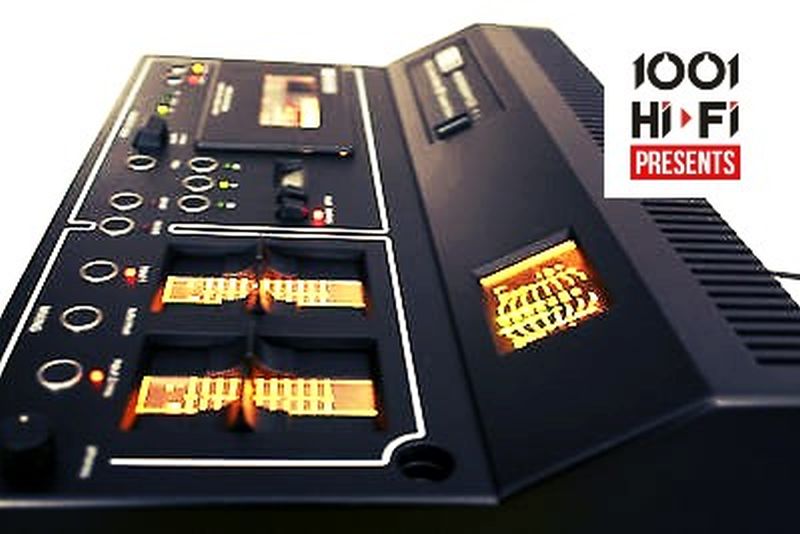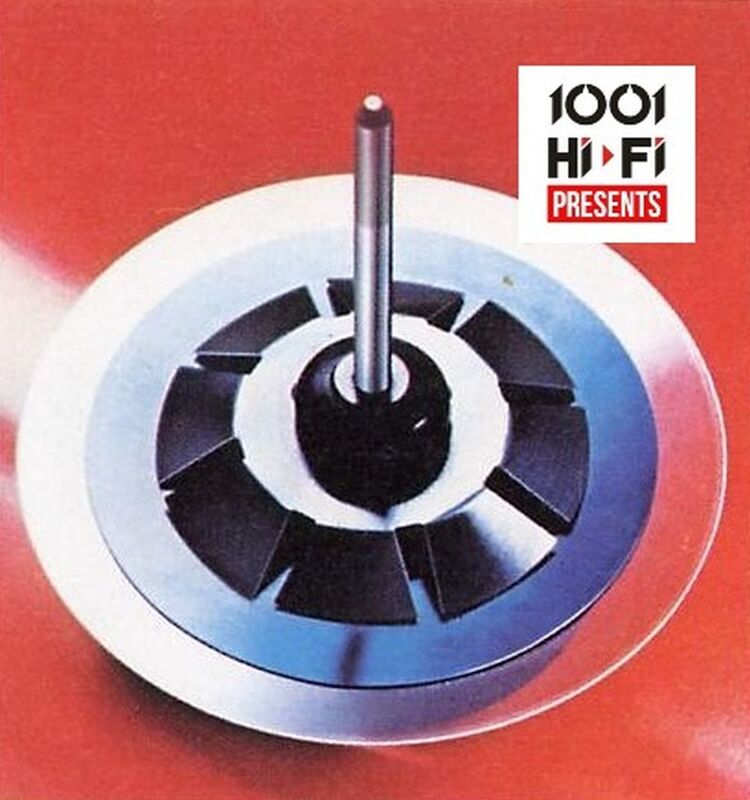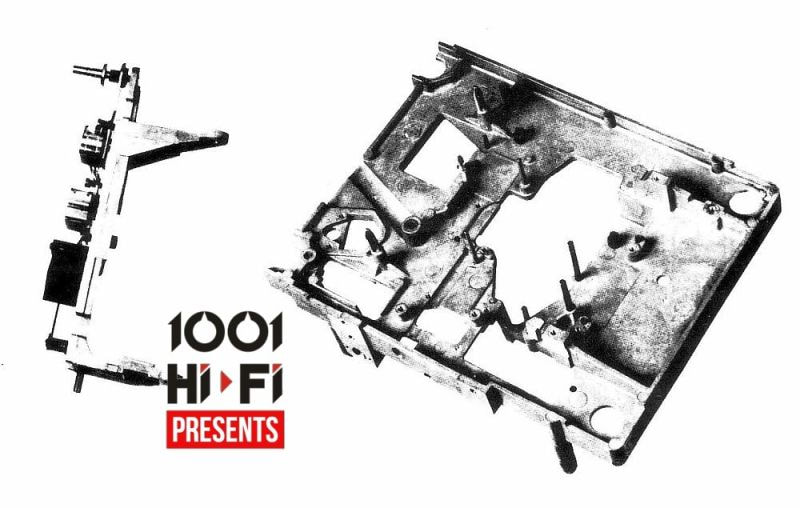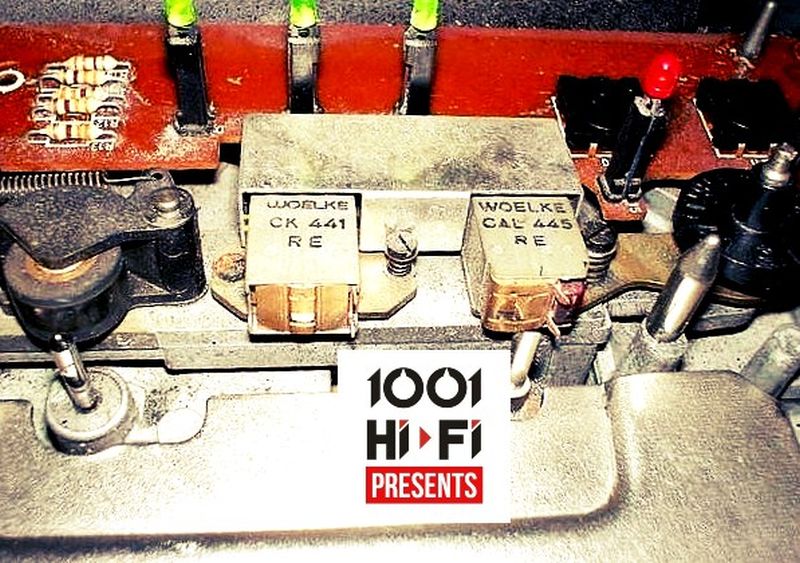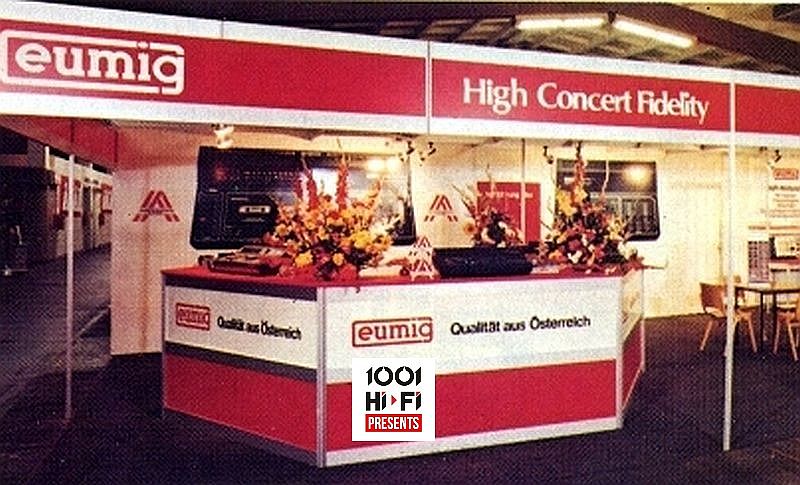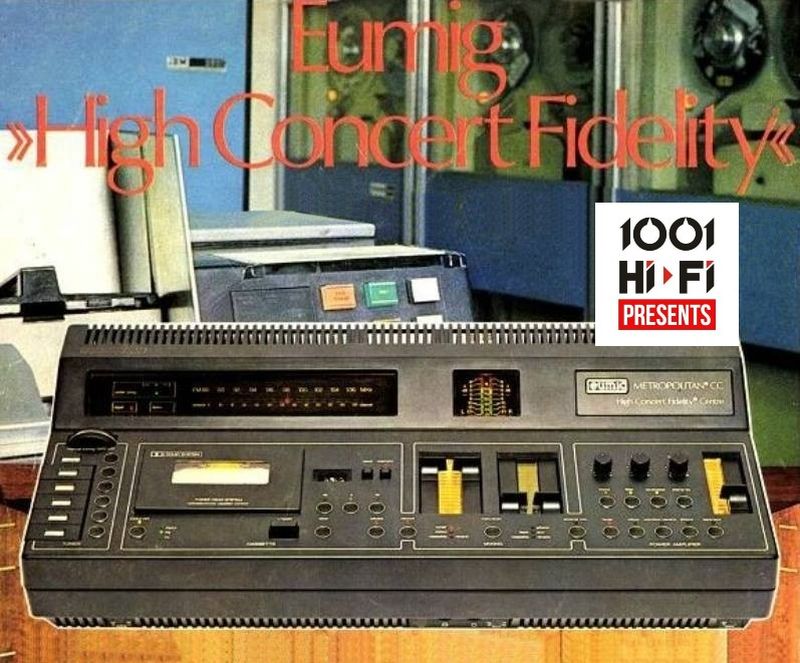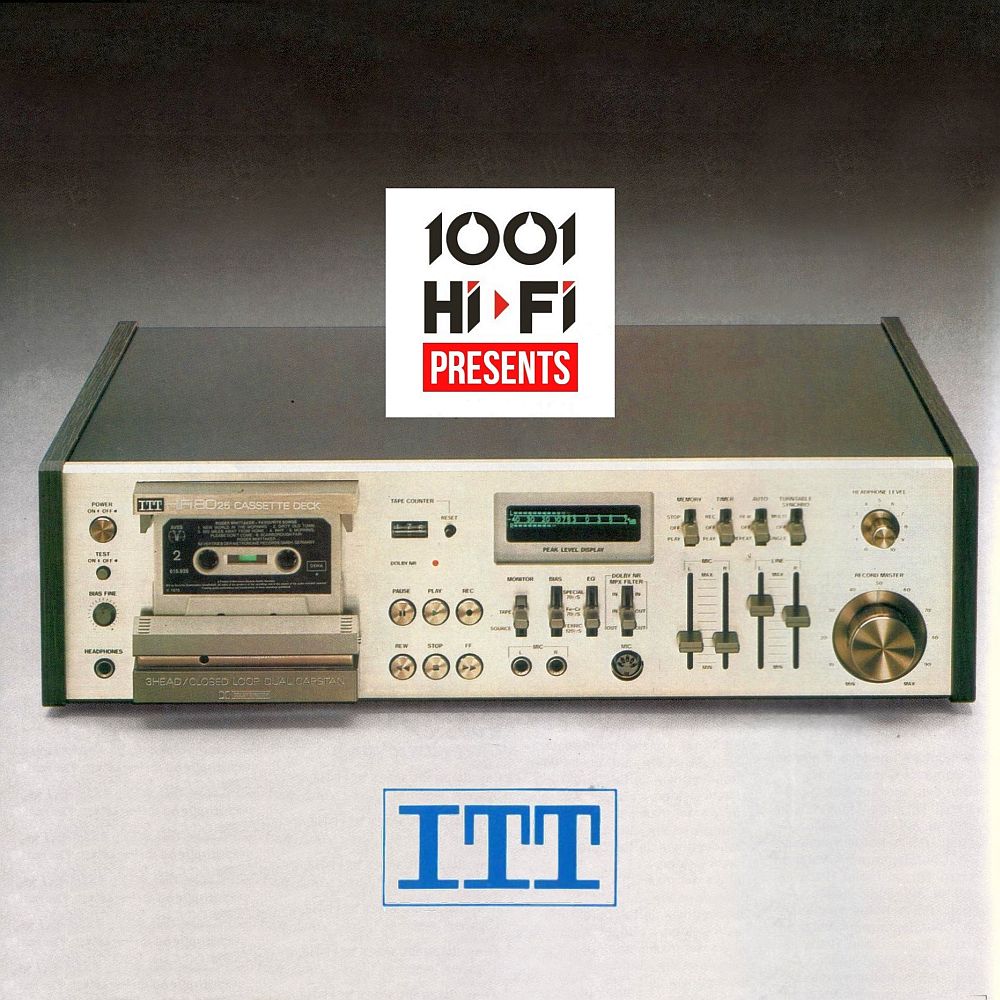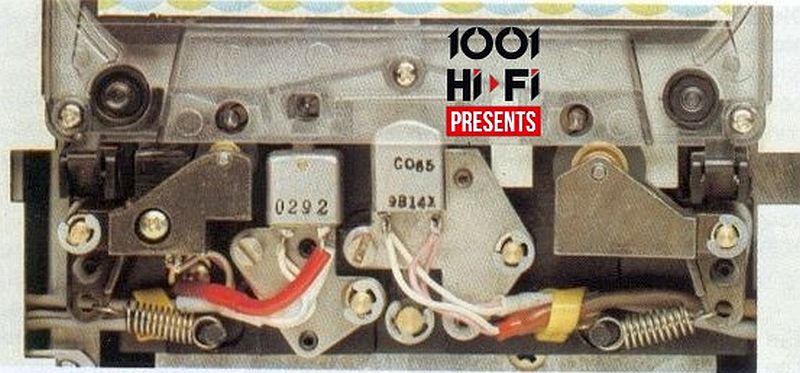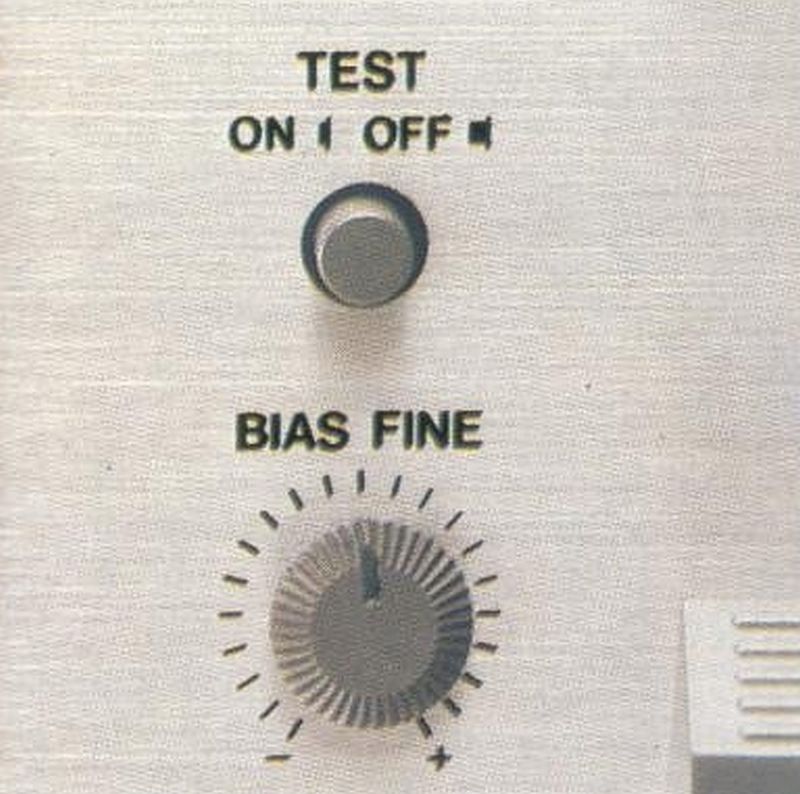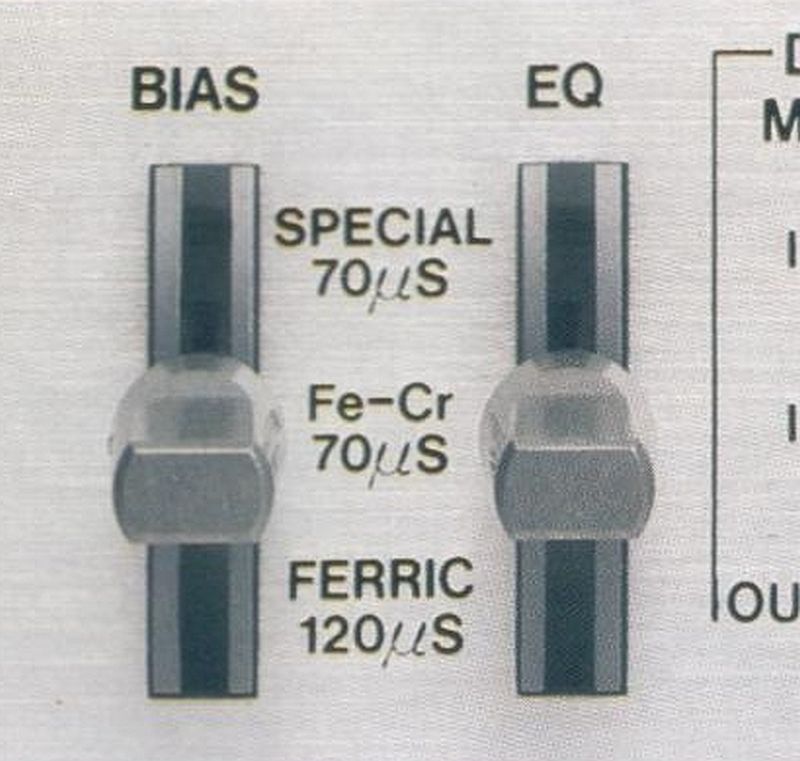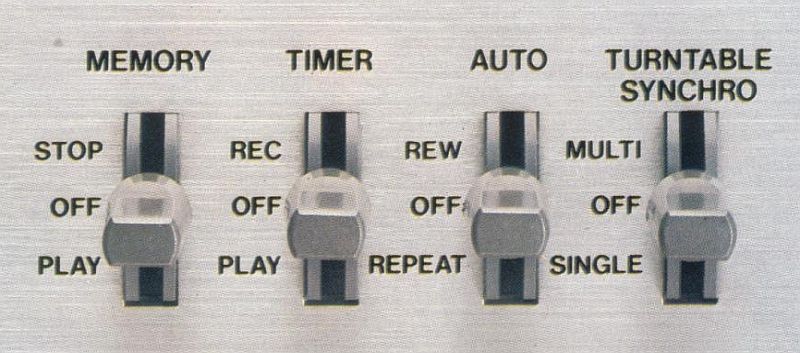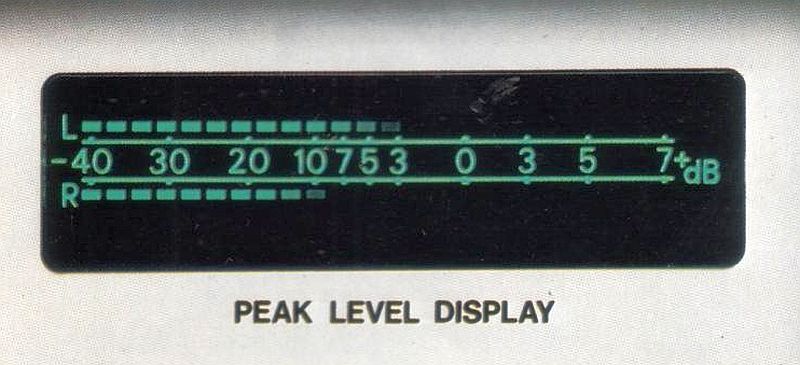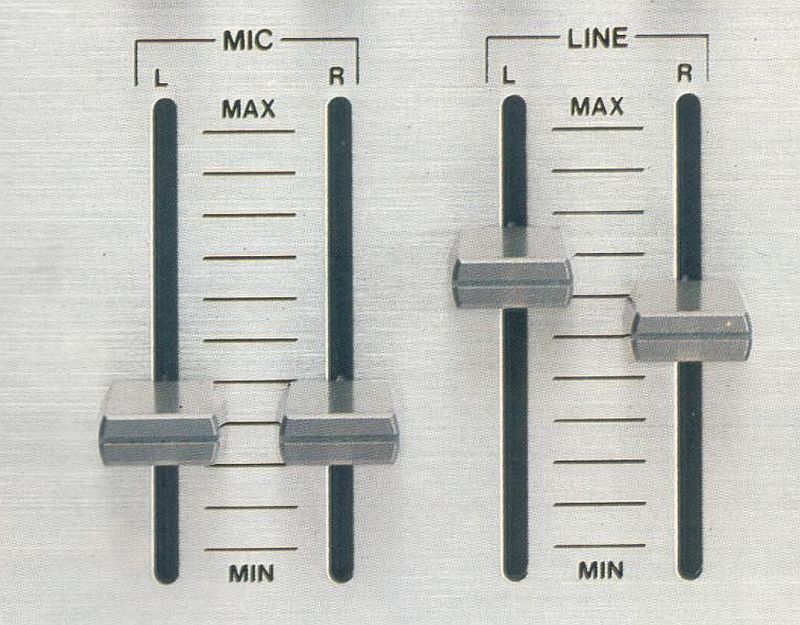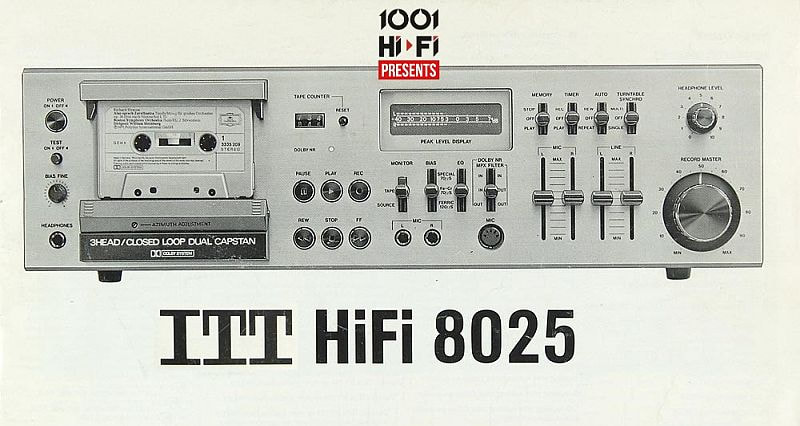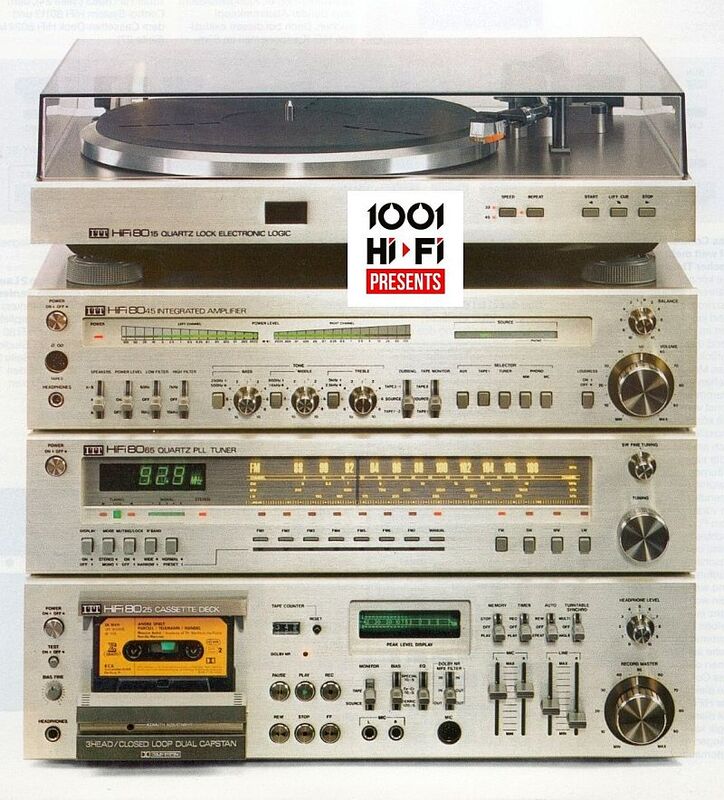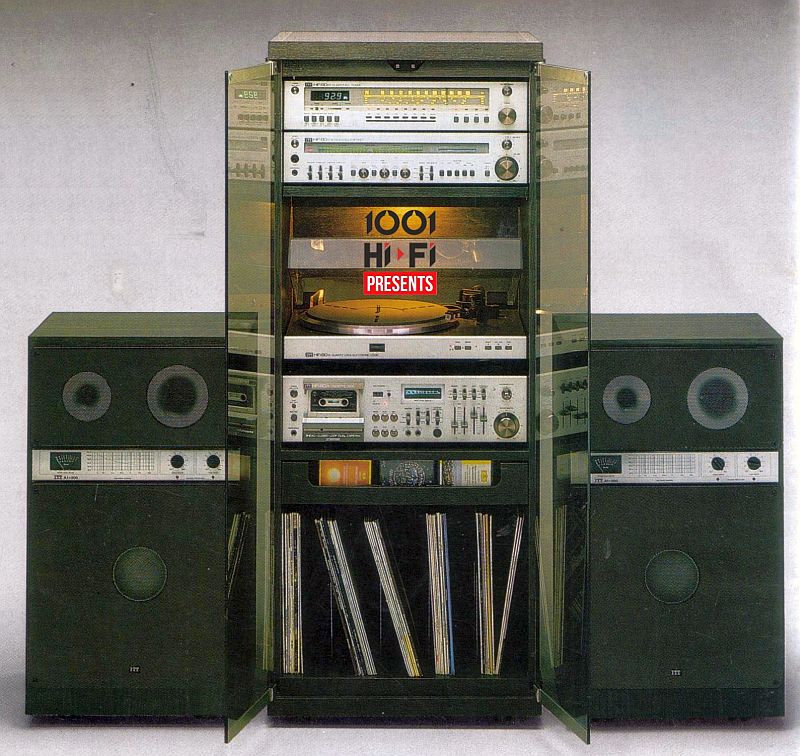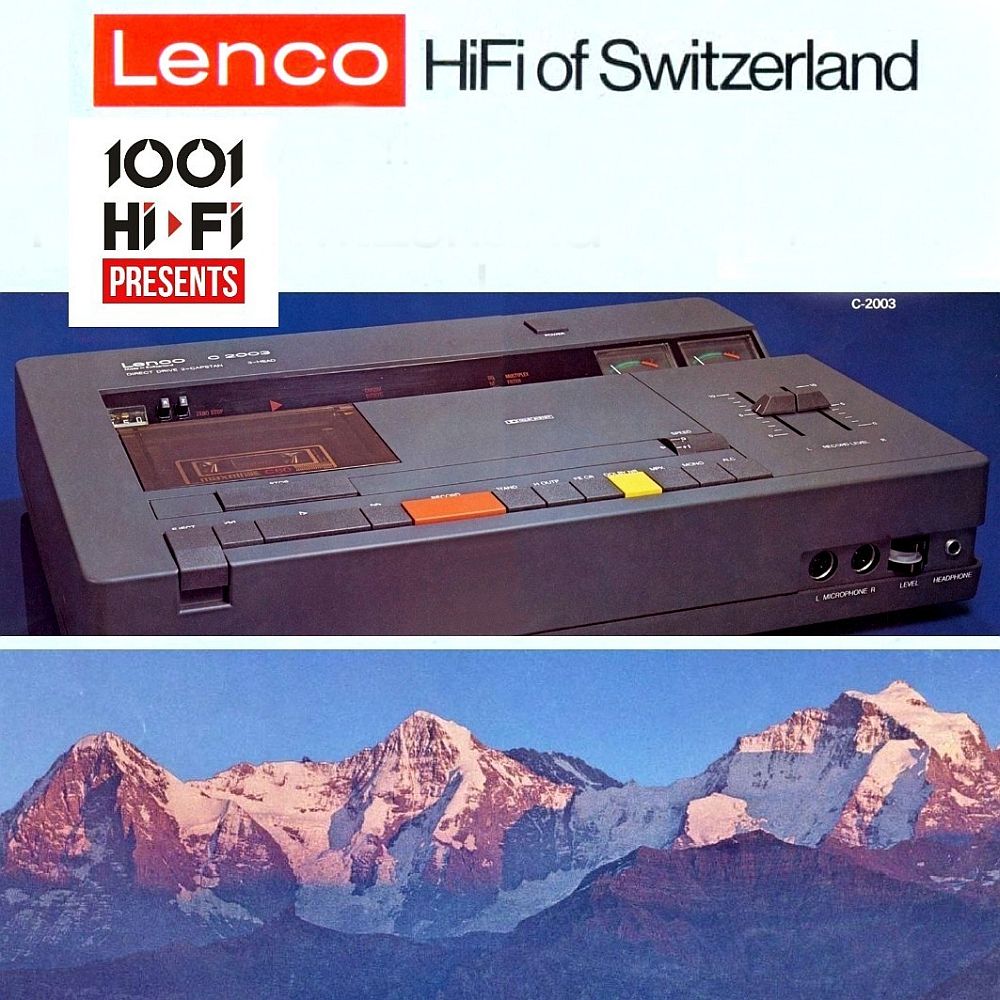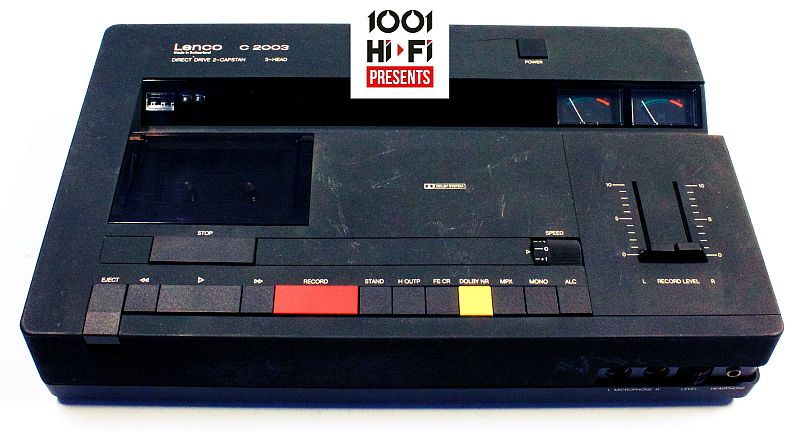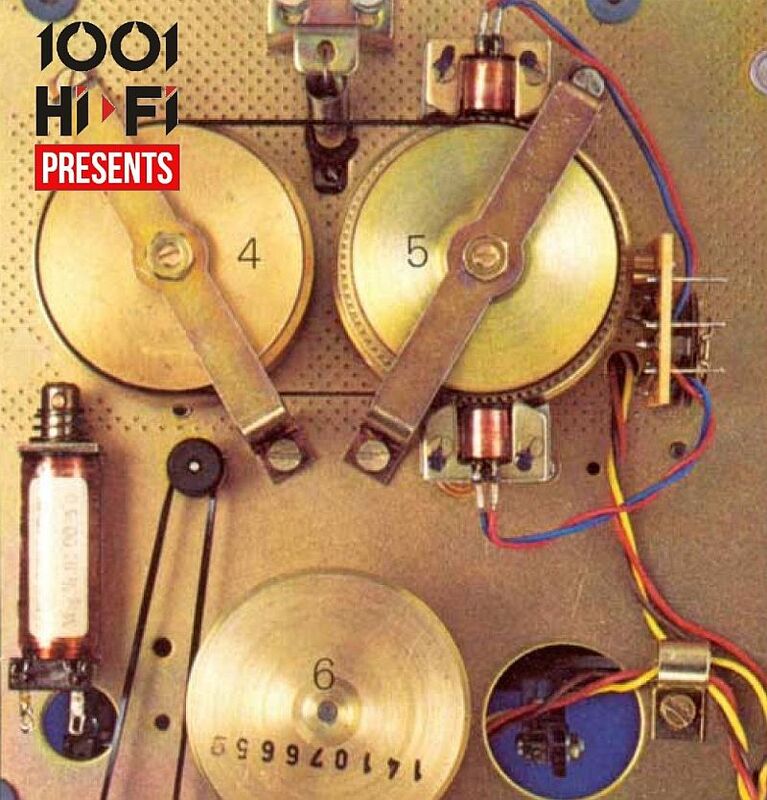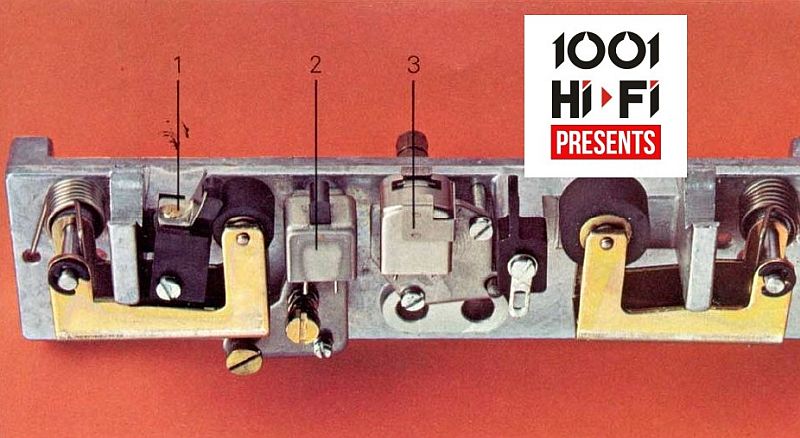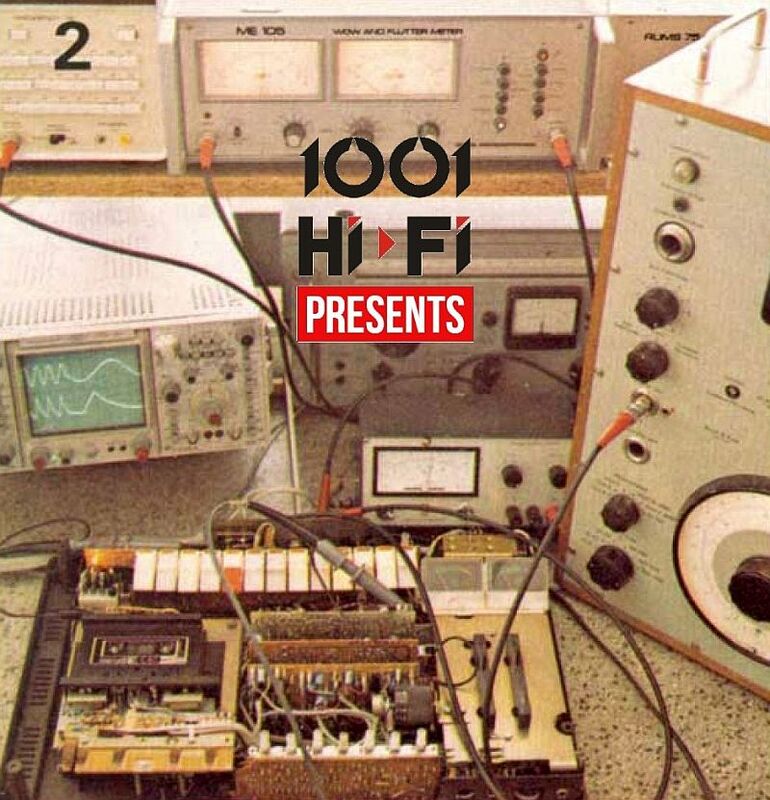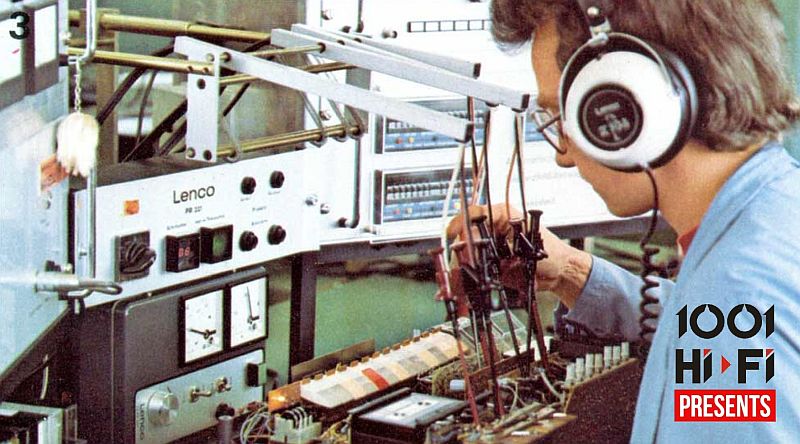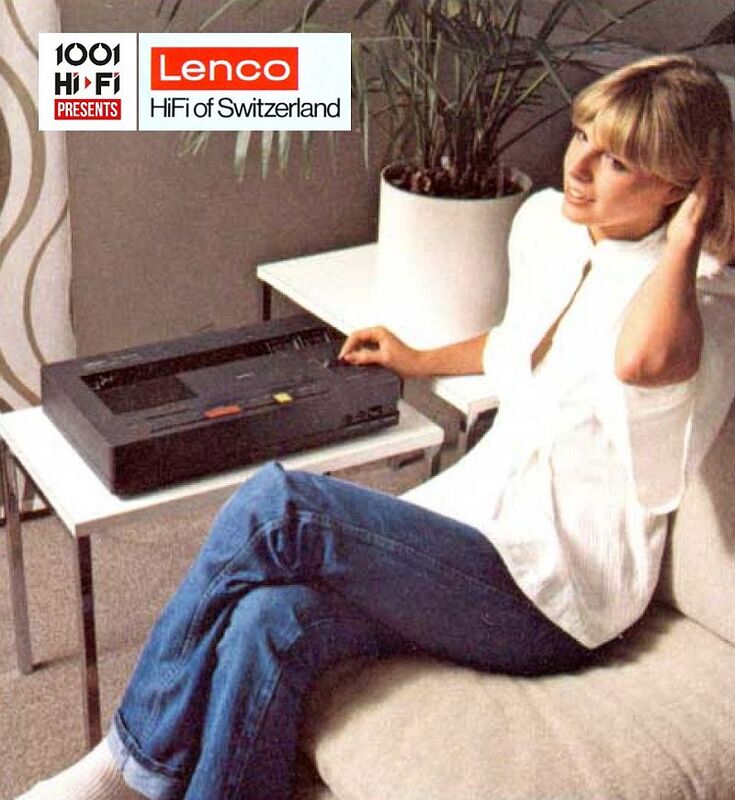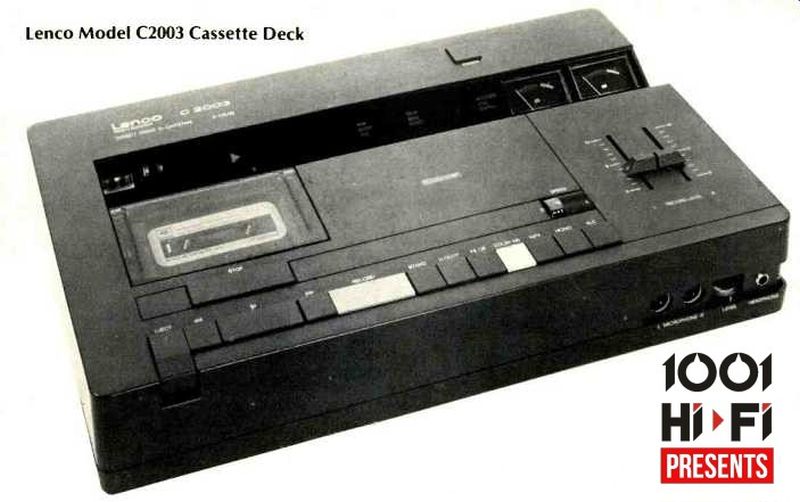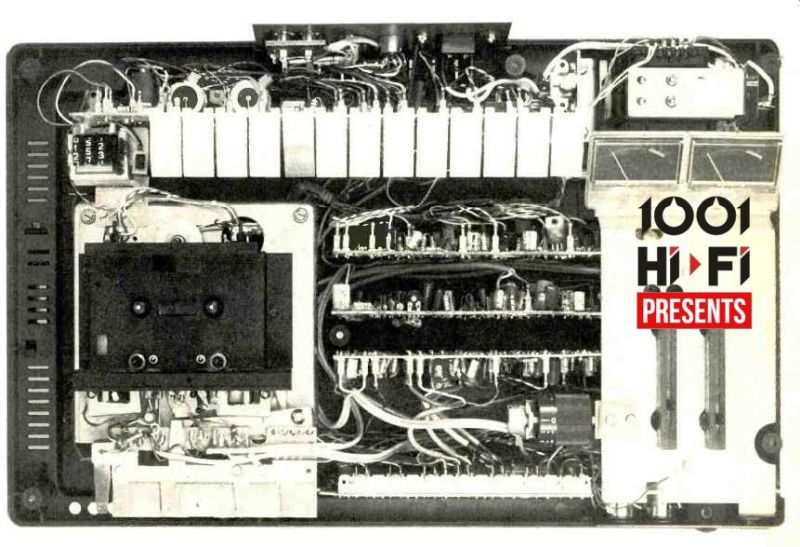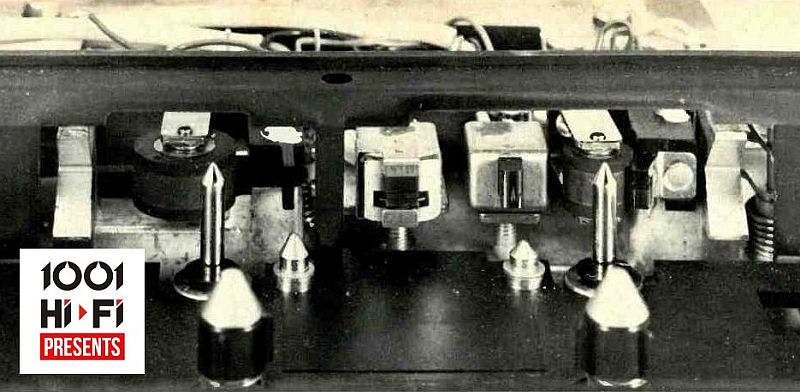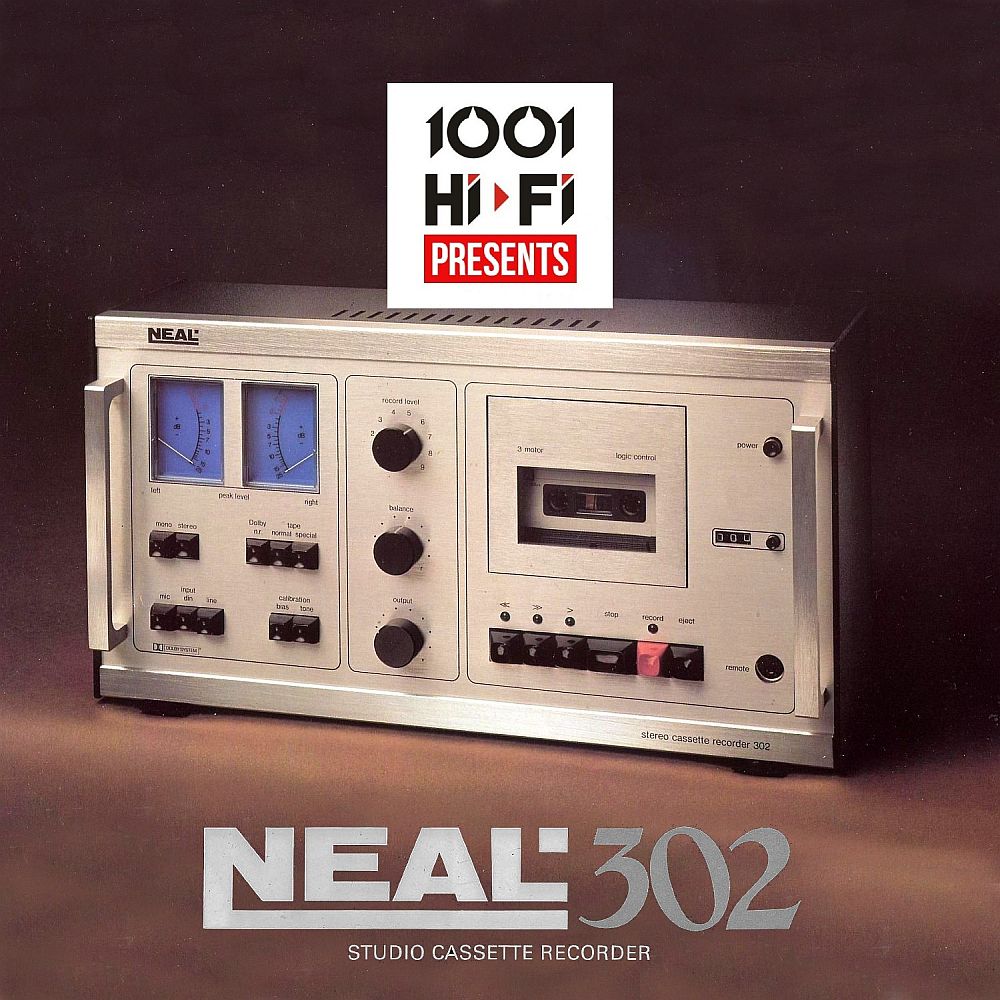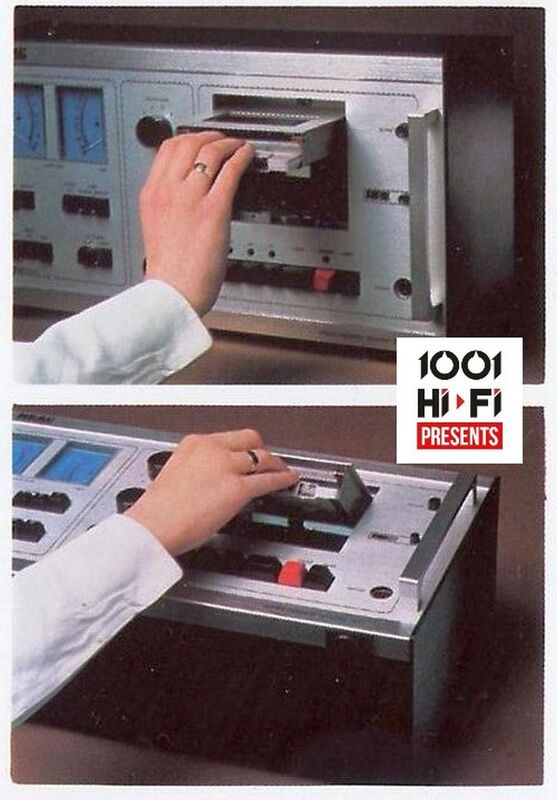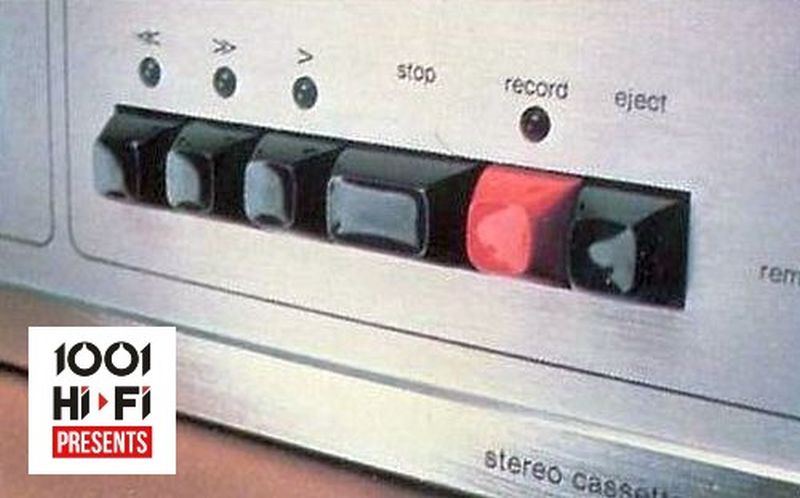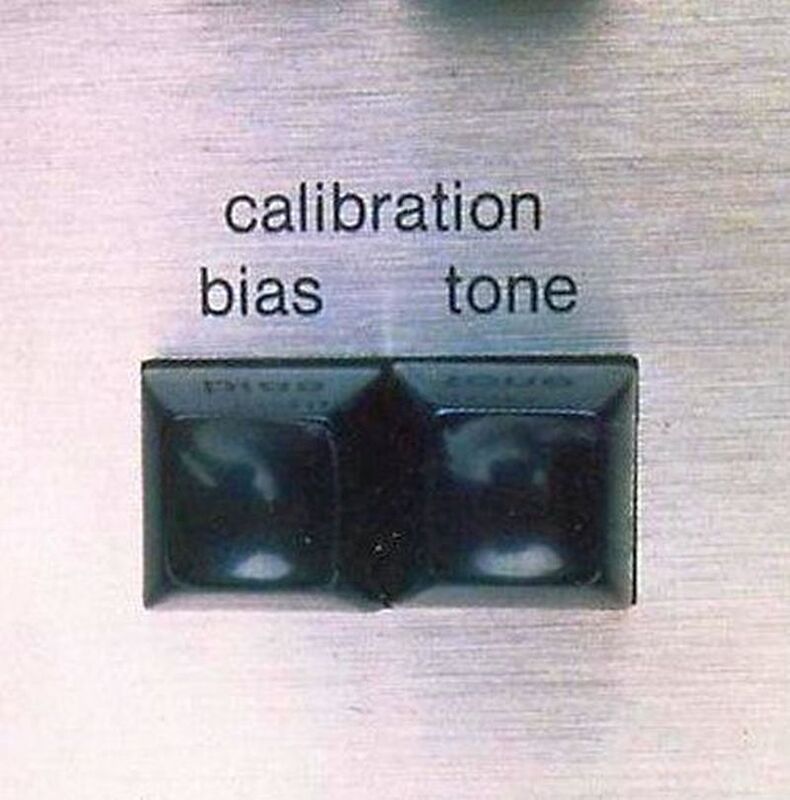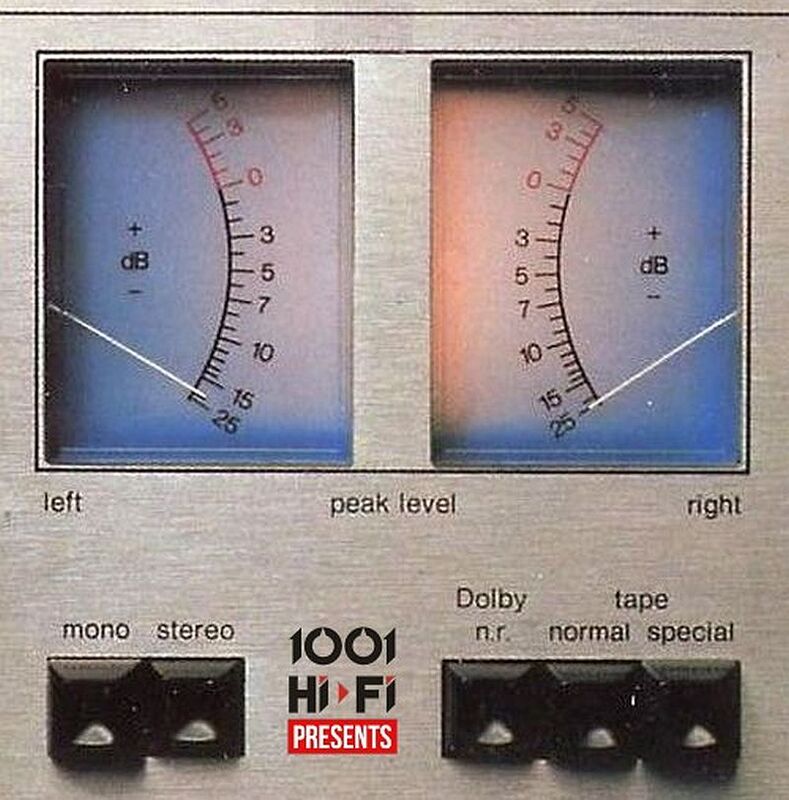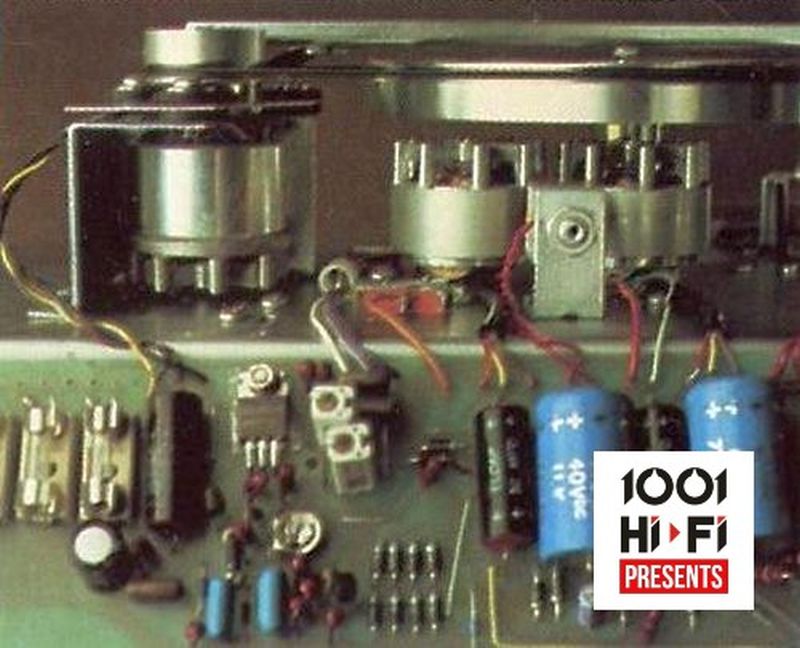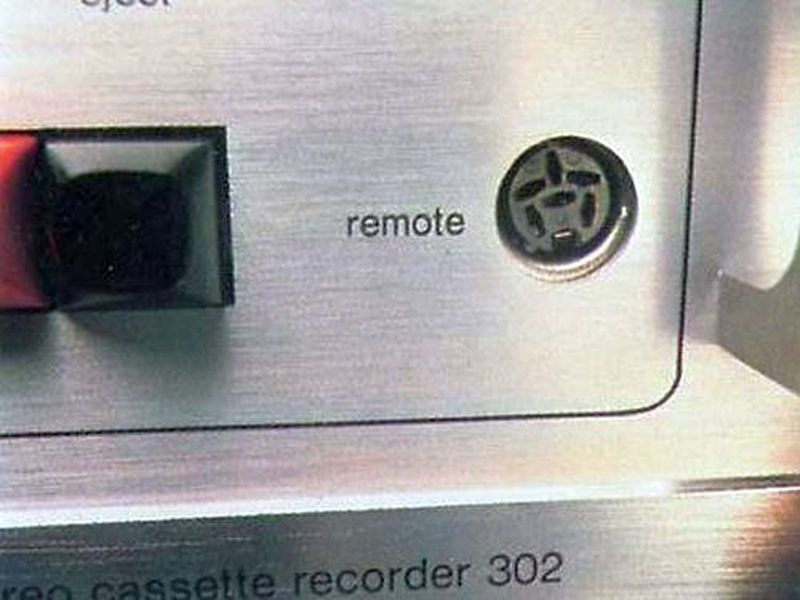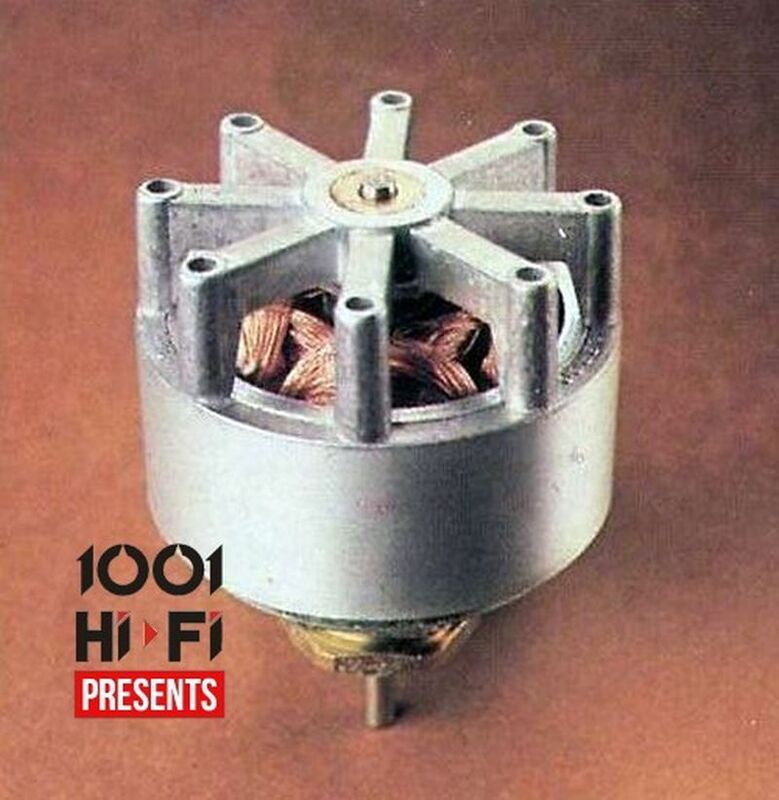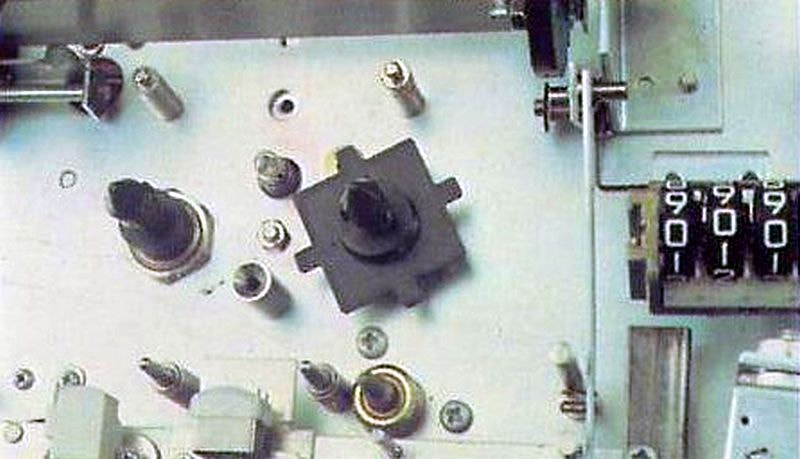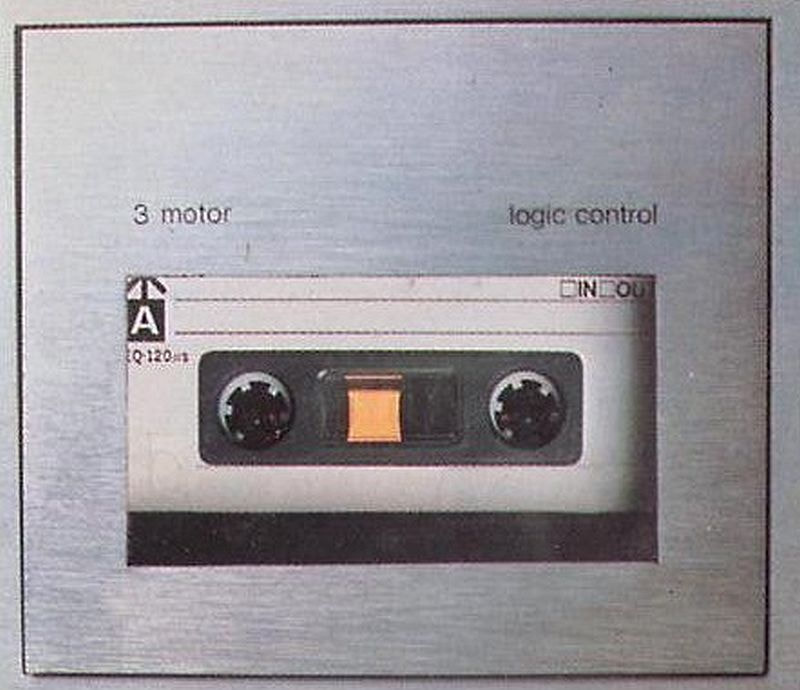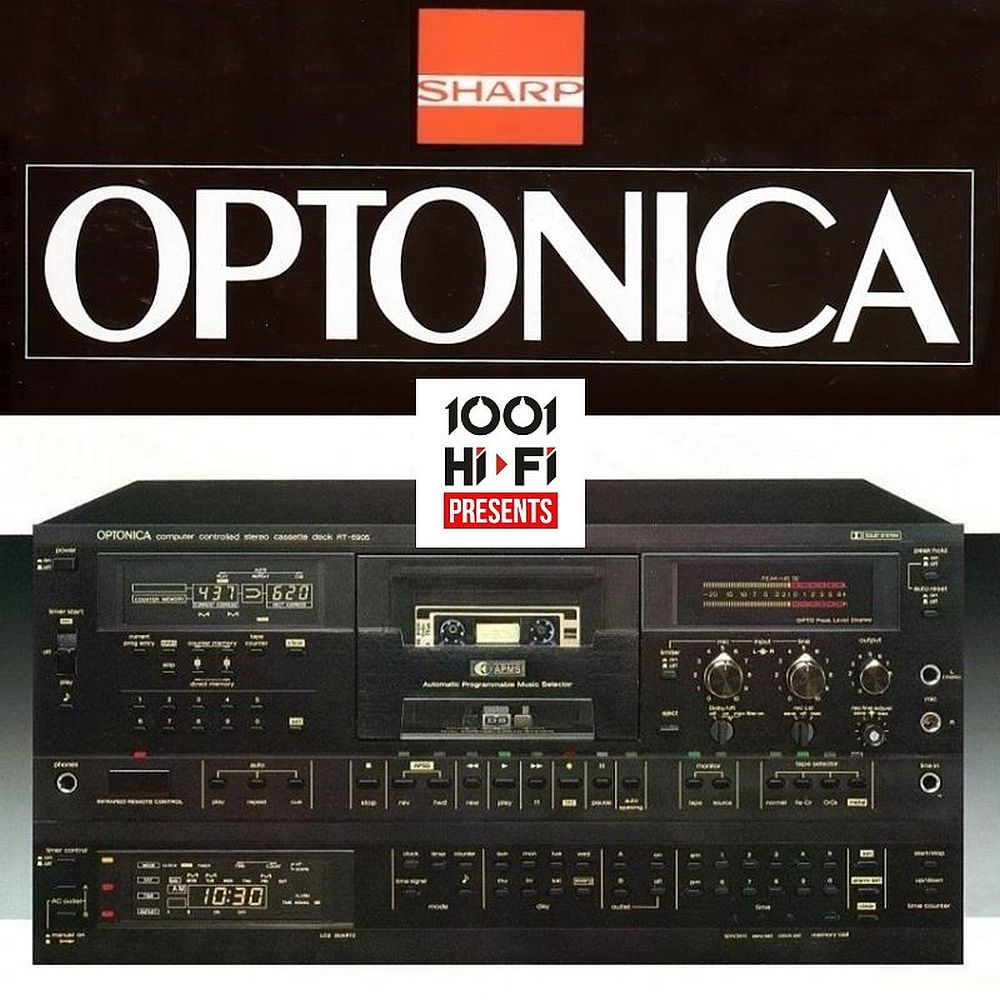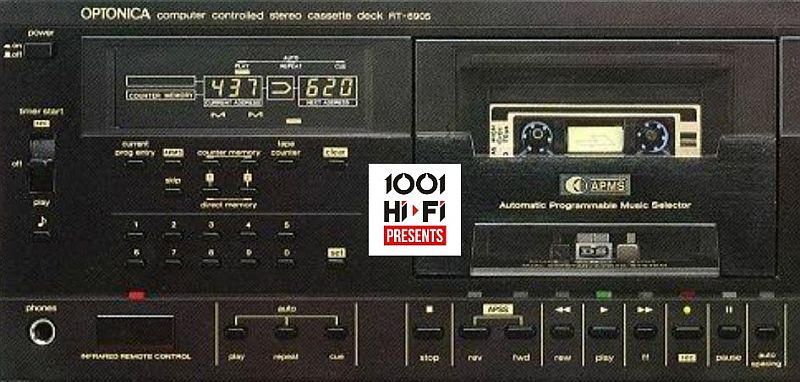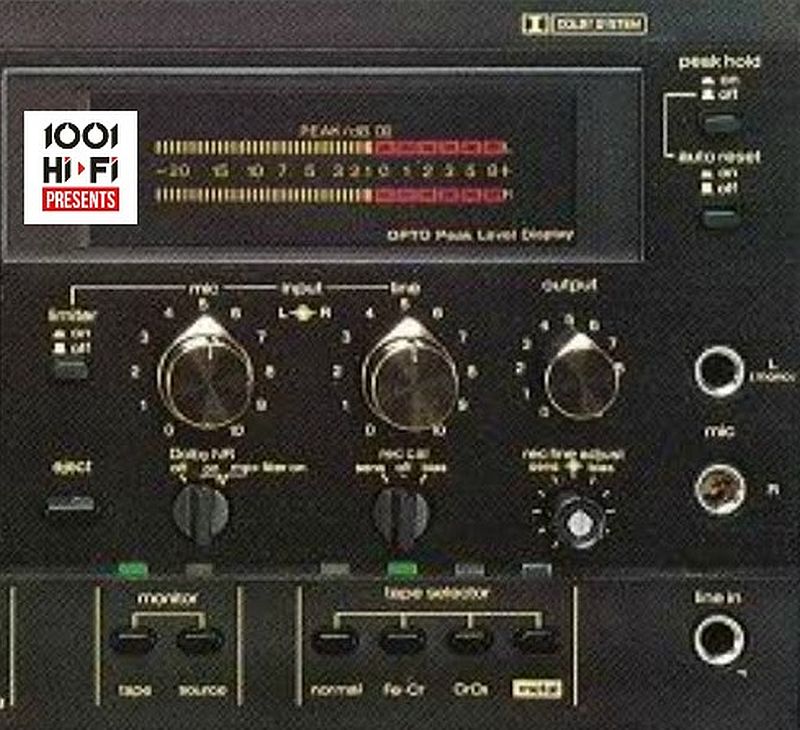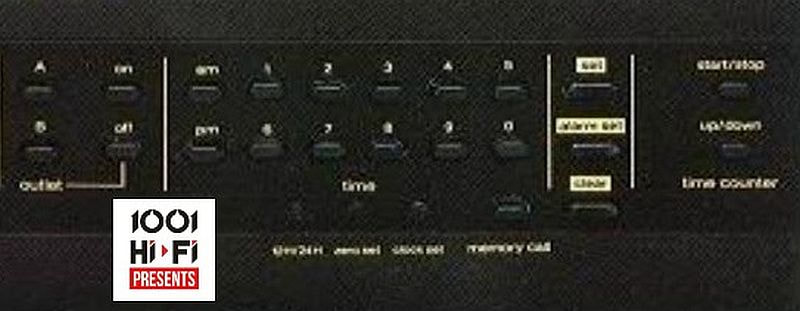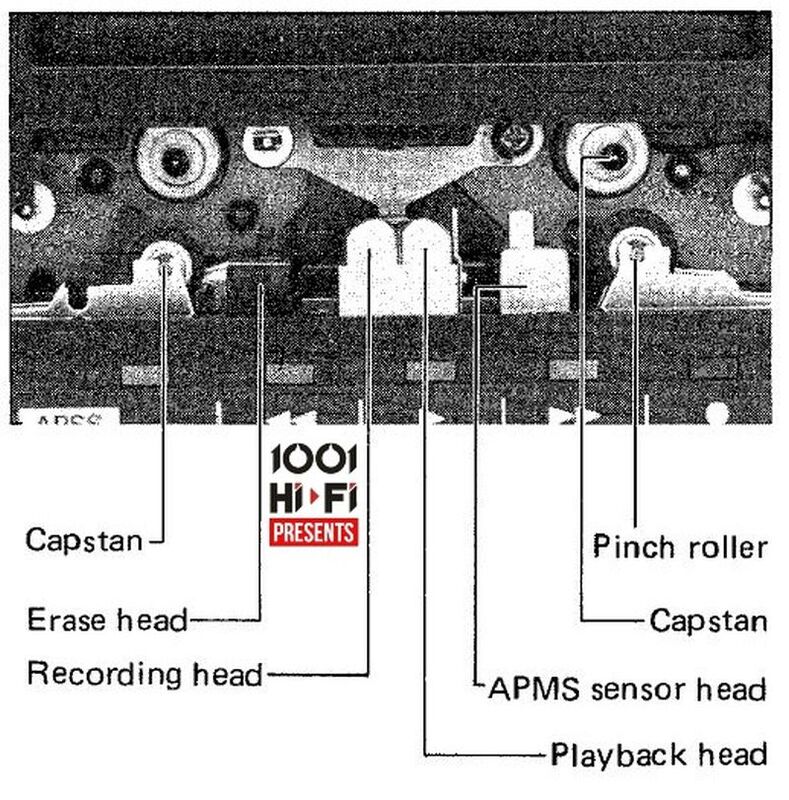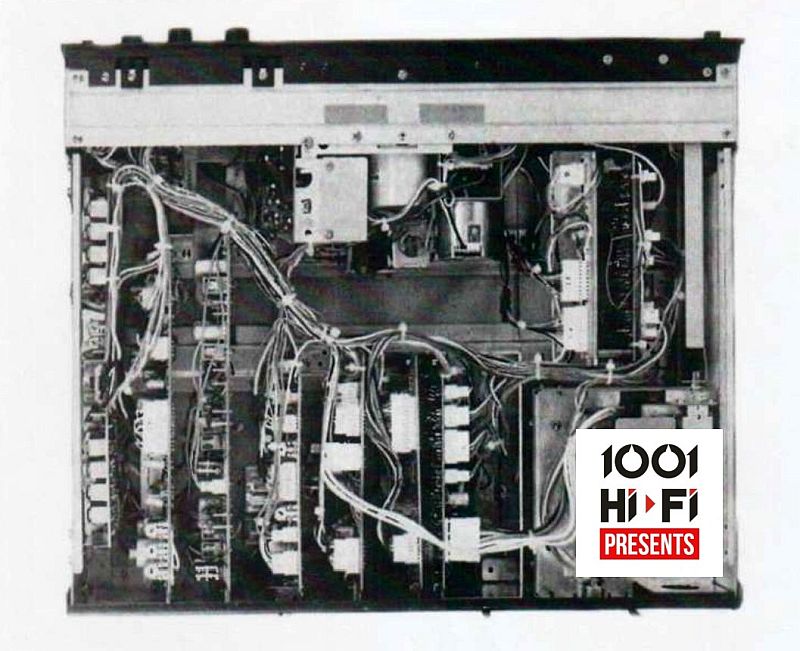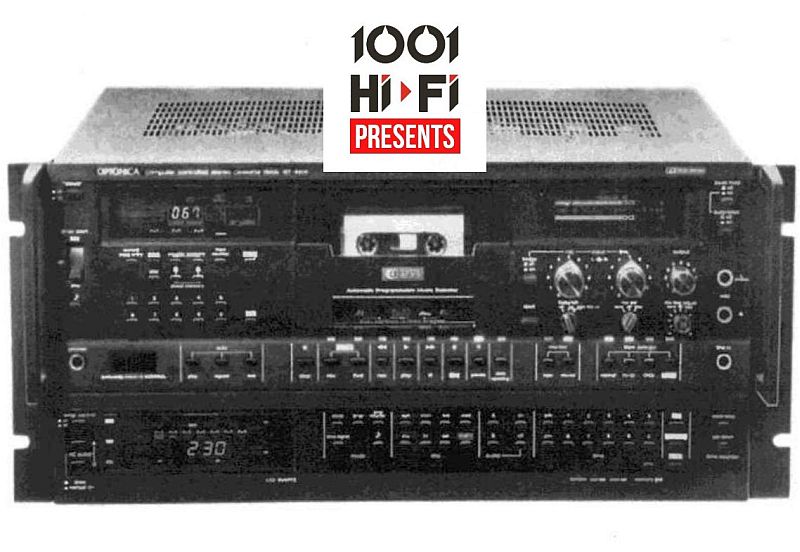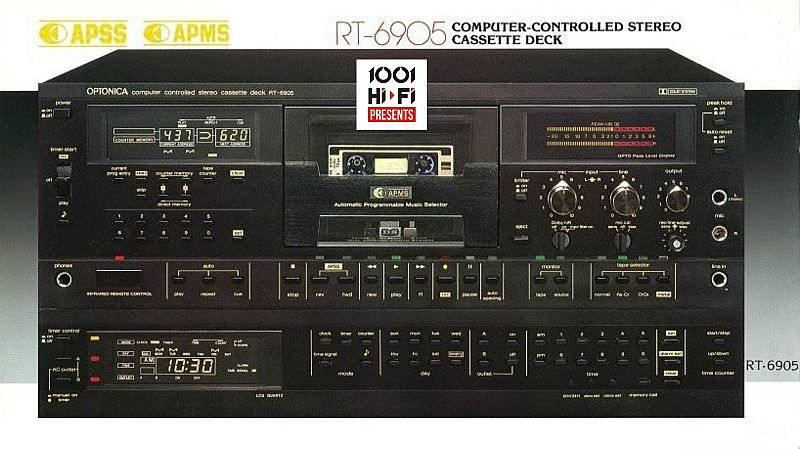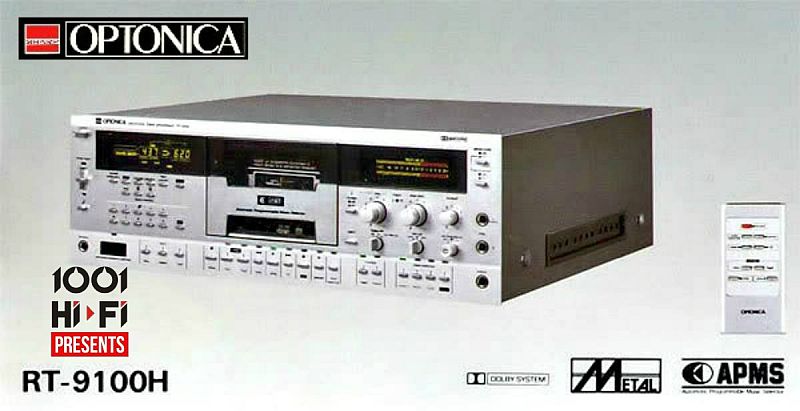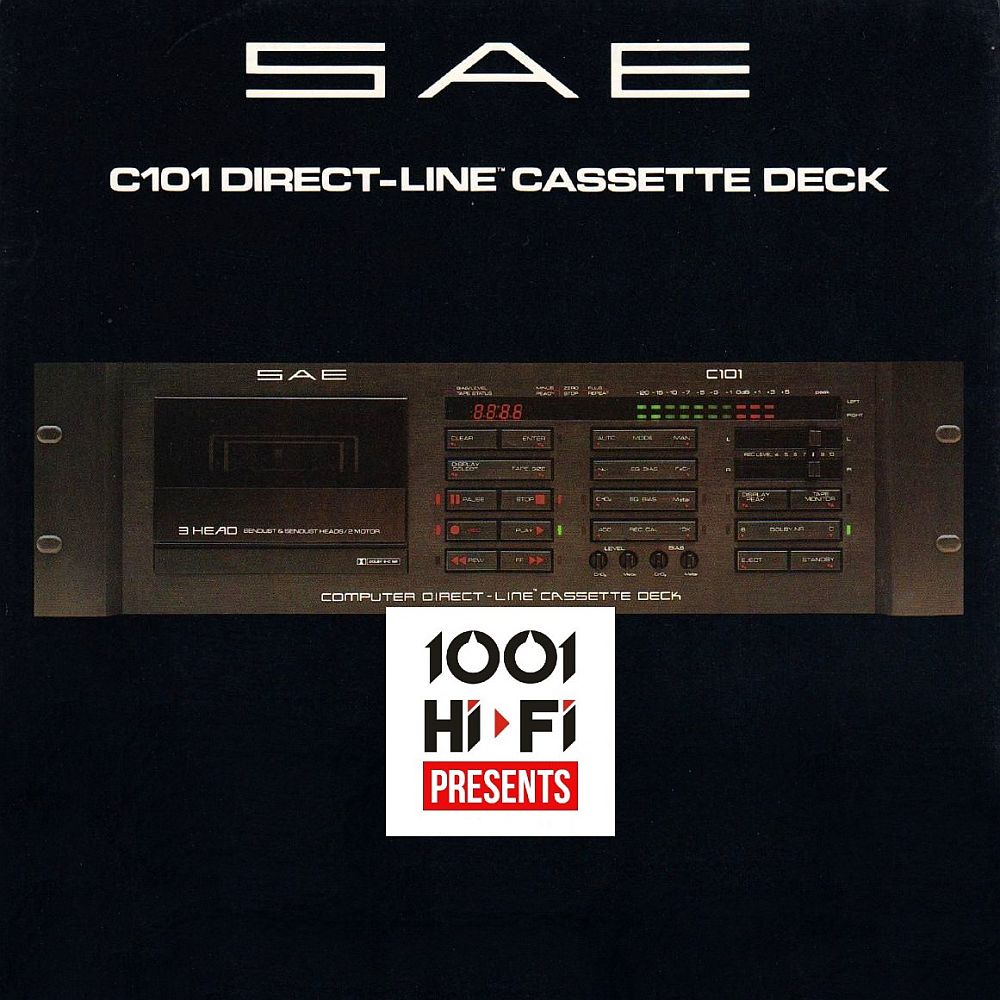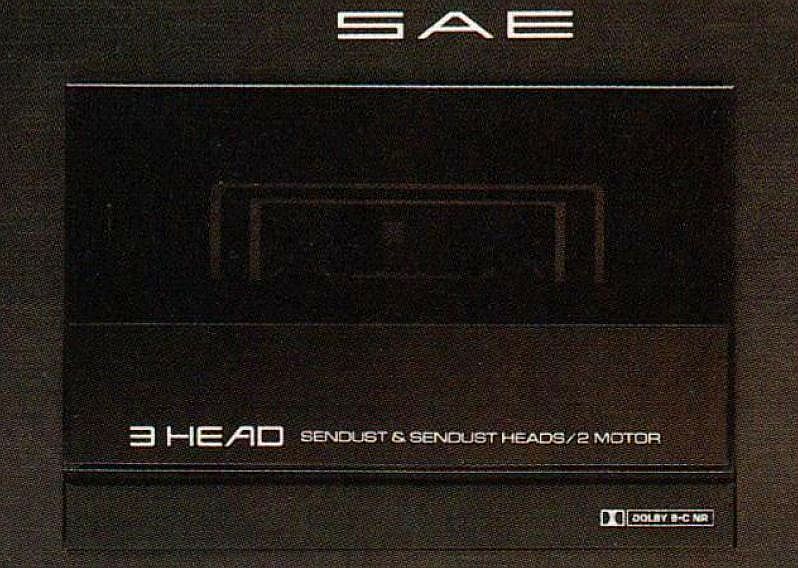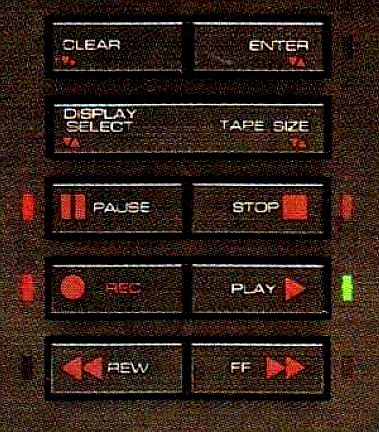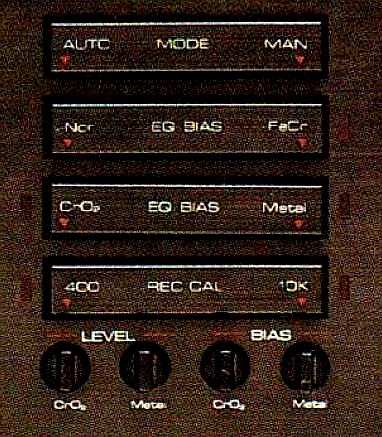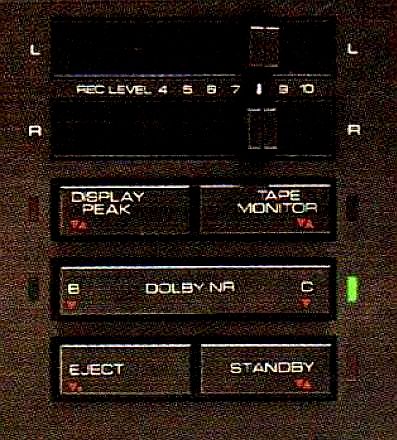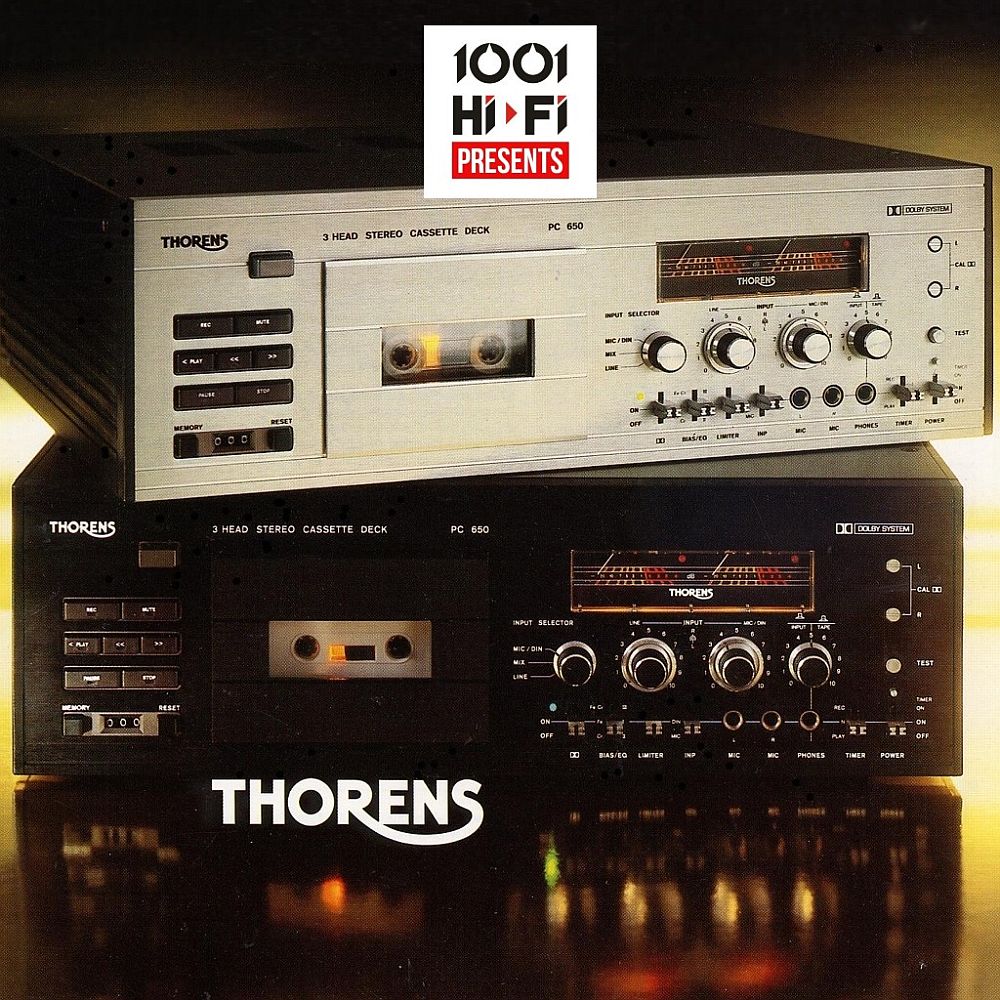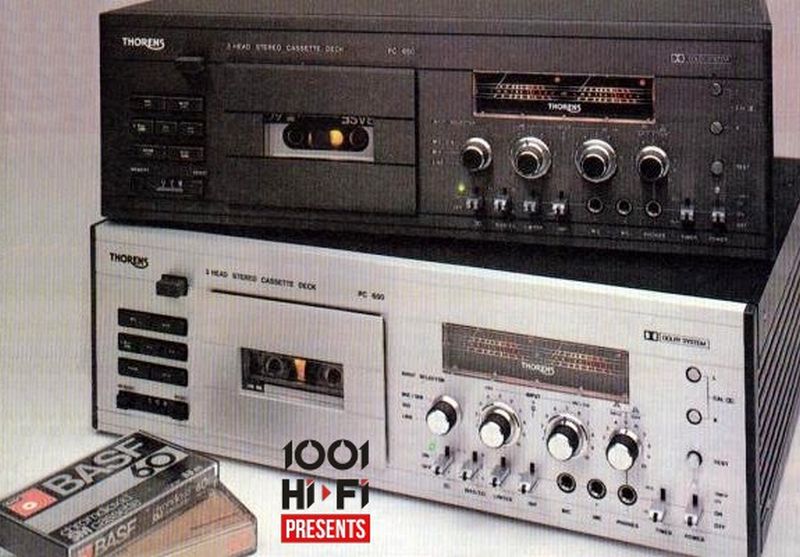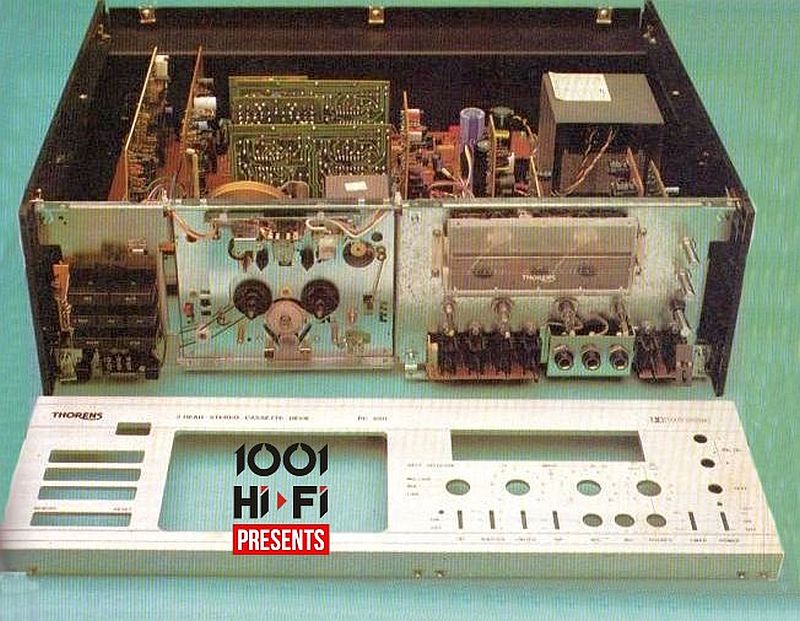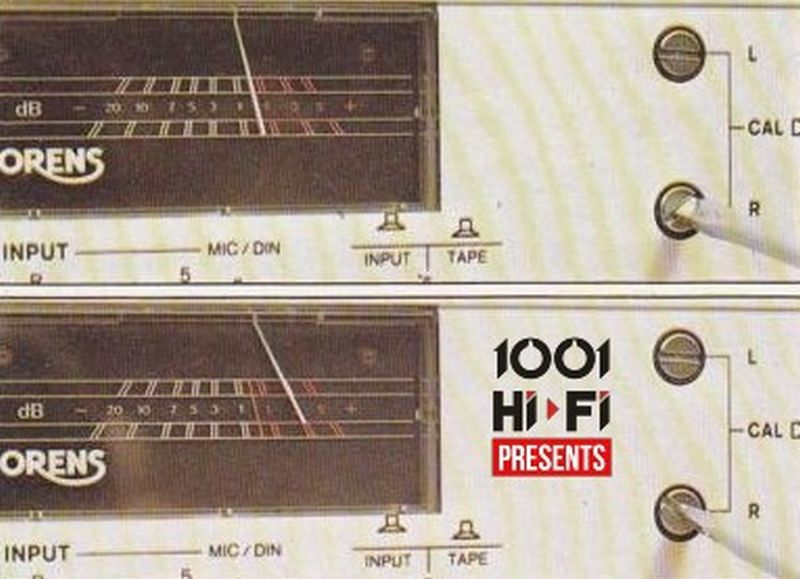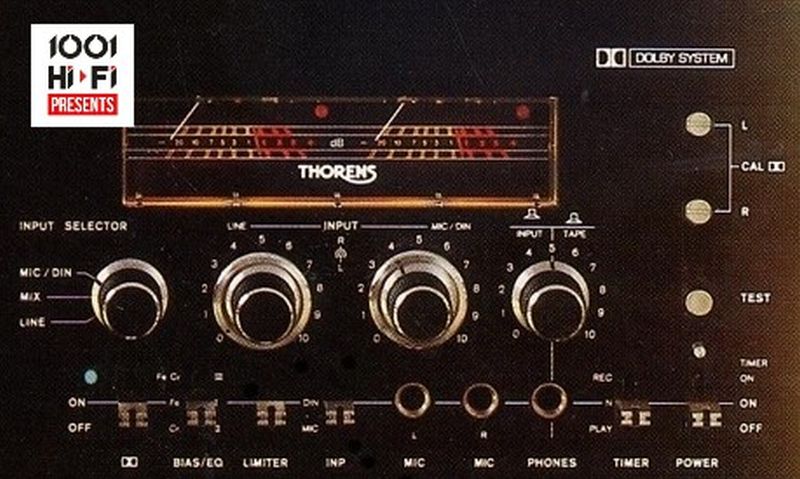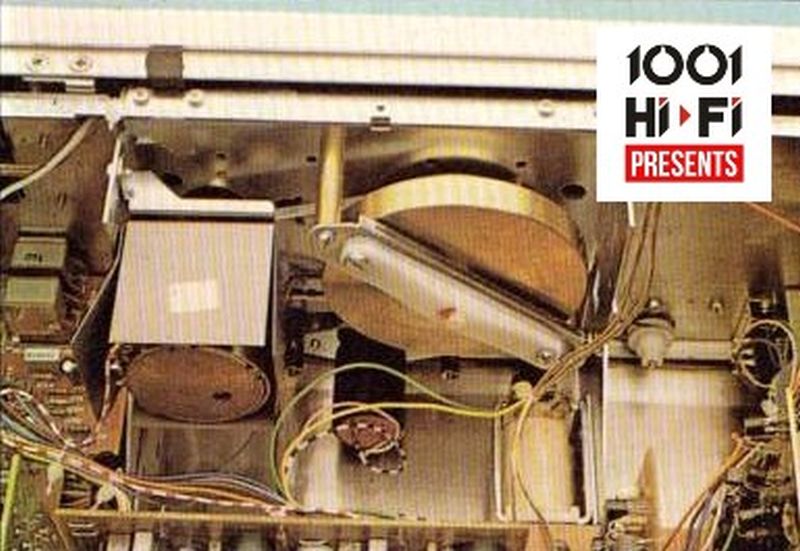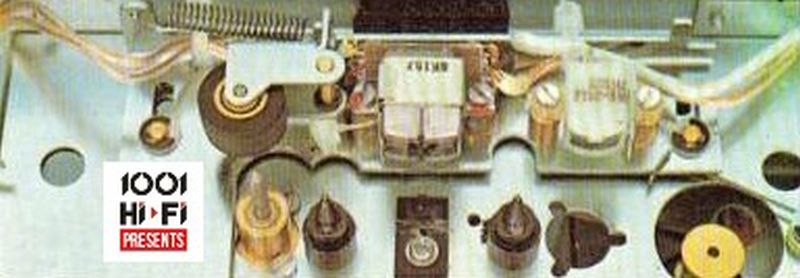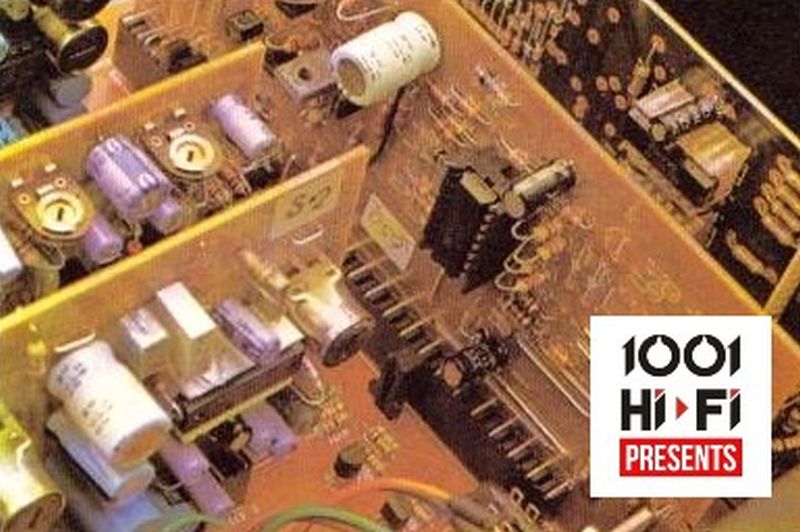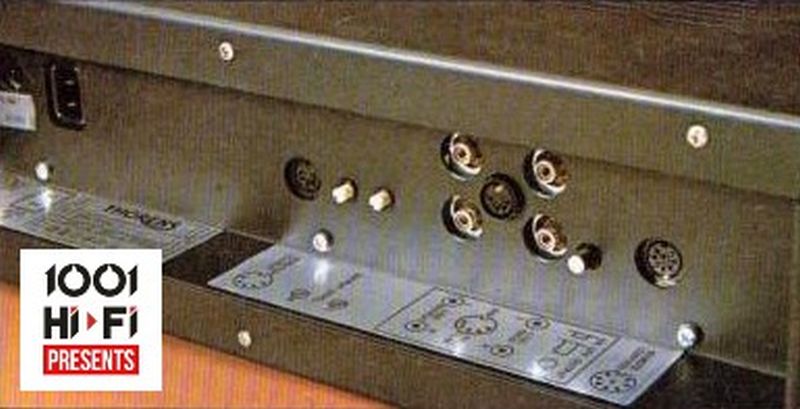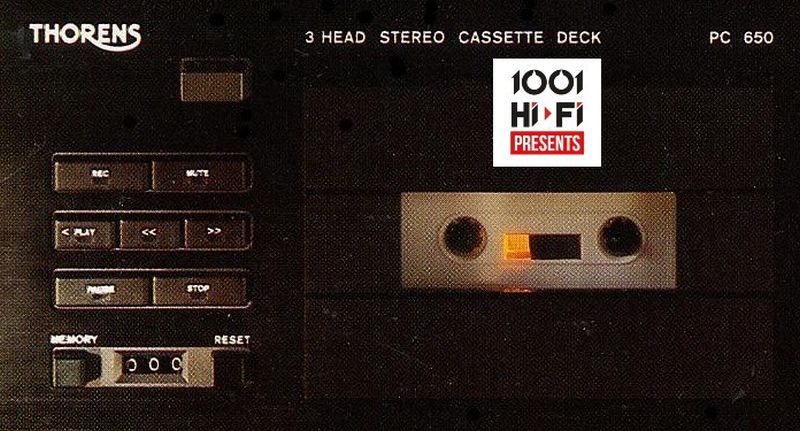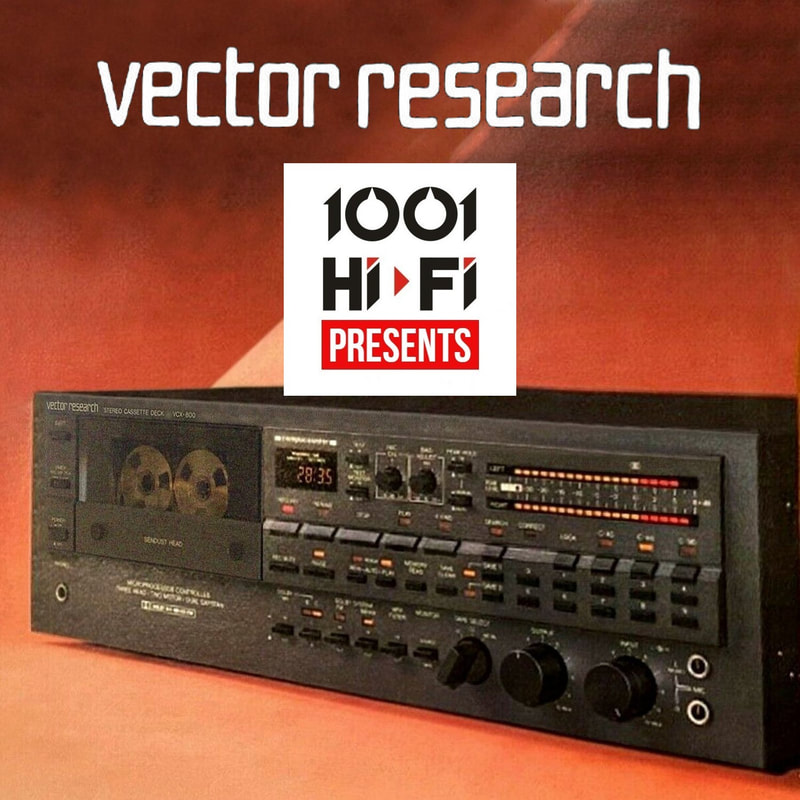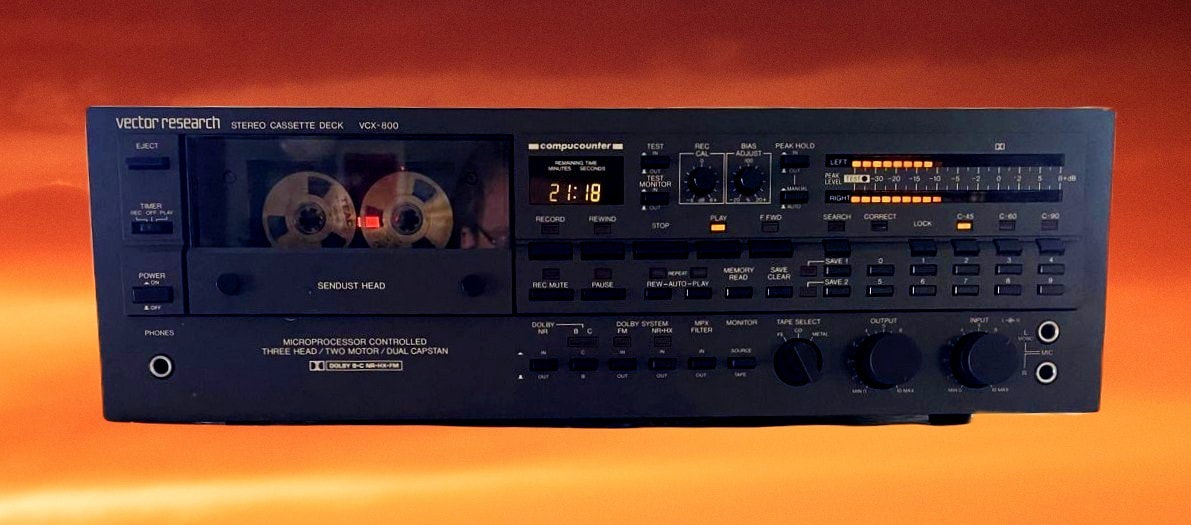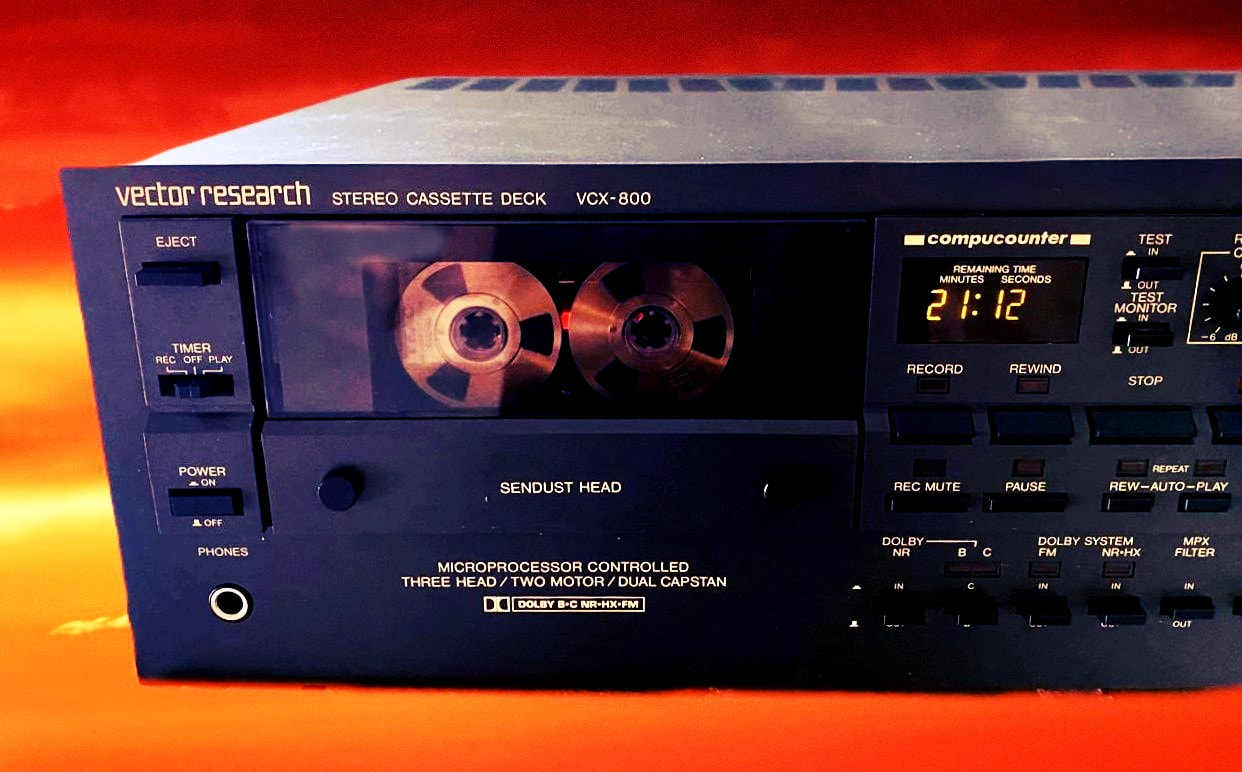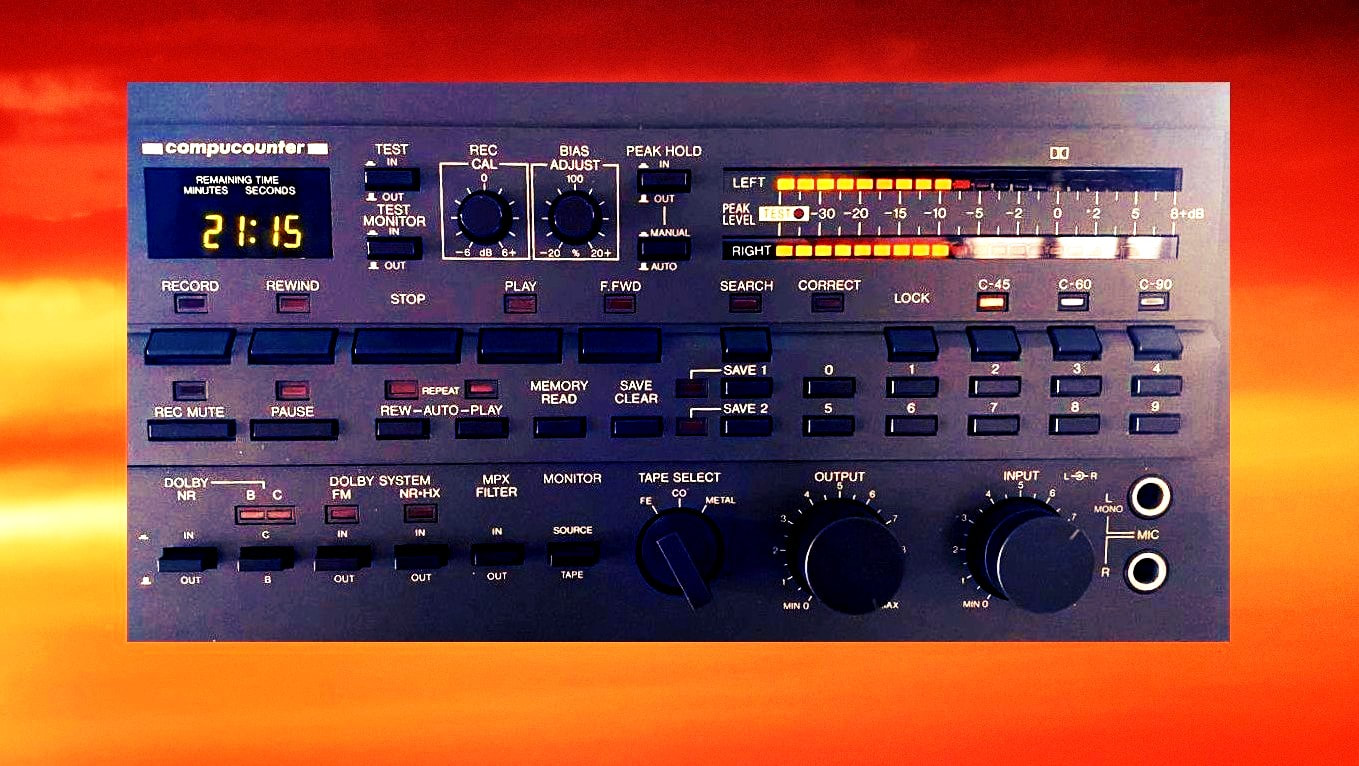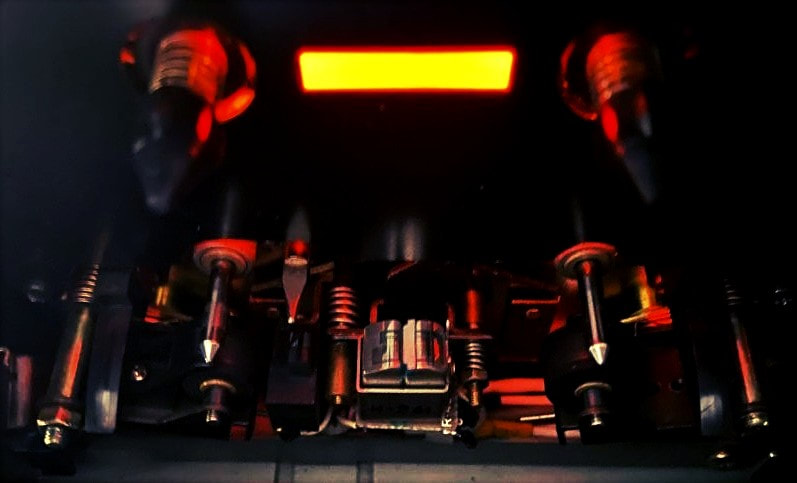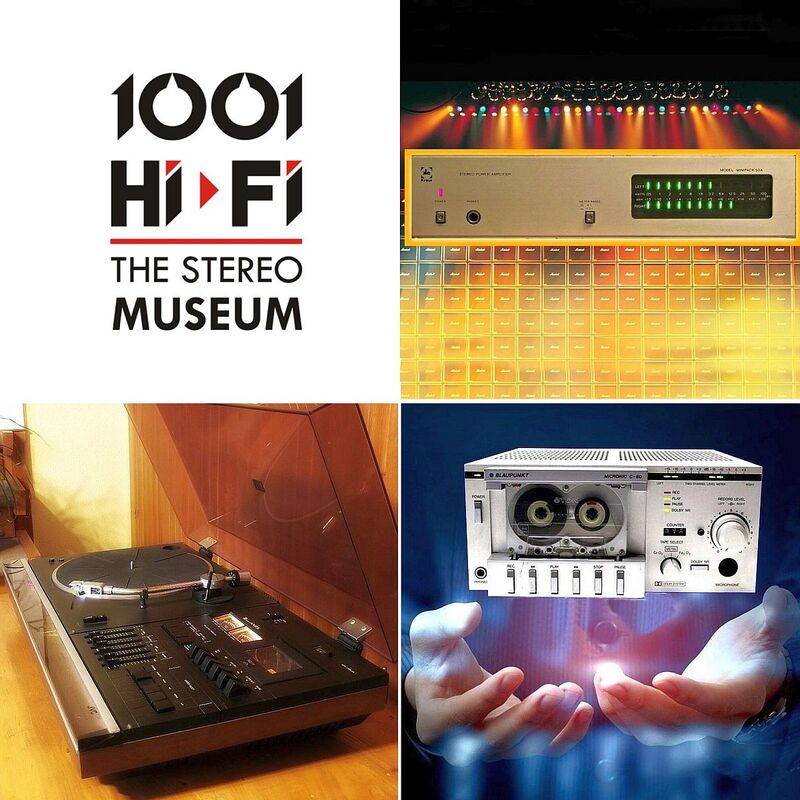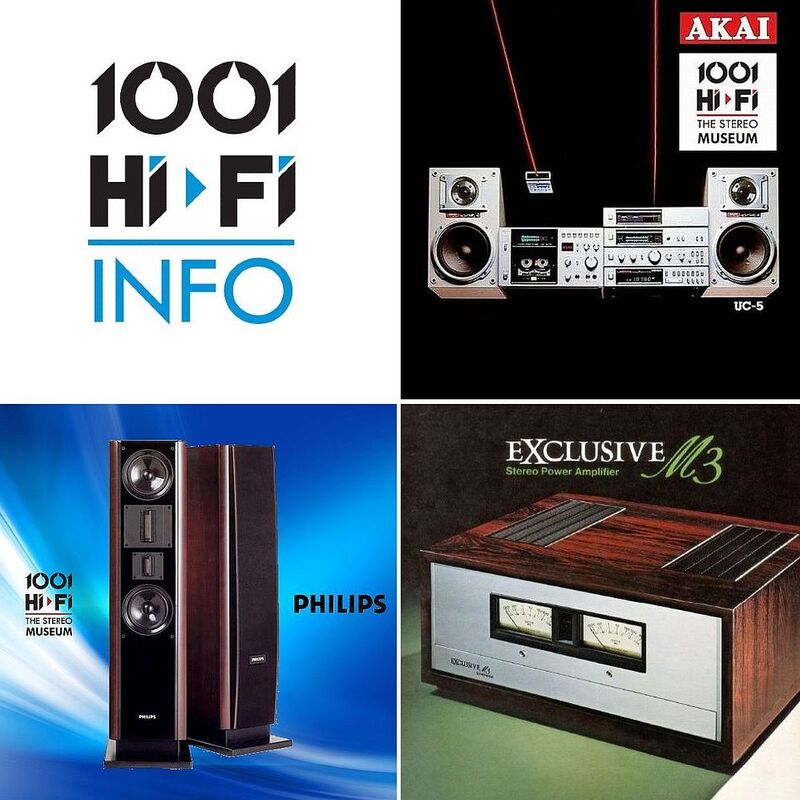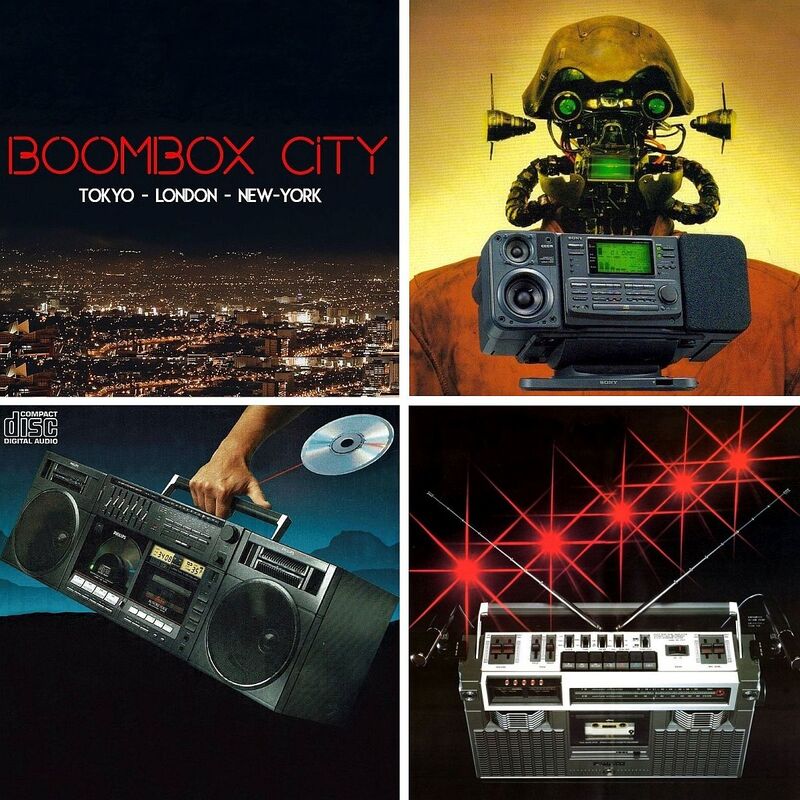ARCAM DELTA 100 (U.K. 1992)
The award winning Arcam Delta 100 from 1992 was the first British designed and manufactured cassette deck to incorporate the then new Dolby S-type noise reduction system. The Delta 100 feature audiophile grade electronics, State-of-the-art Dolby S noise reduction plus Dolby B & C NR systems also included. The deck is built around a Denon sourced 3 heads, 3 motor Dual capstan tape drive. The Delta 100 features automatically controlled source-tape monitoring while for recording it has built in oscillators with variable bias/record calibration controls. The LED easy to read level meters are vertically placed while the deck has a fluorescent real time tape counter. Both can be switched off during playback. Original sale price was £850 but only around 720 units were ever built. The CR200 System Remote Control was supplied as standard with the Delta 100. (Wow and flutter 0.04% wrms | Frequency response 20Hz-20kHz +/-3dB | Dimensions 430*124*340 mm | 8kg | A&R Cambridge)
ASC AS 3001 (GERMANY 1982)
The AS3001 was one of the most sophisticated cassette deck ever. It was Made in Germany and it was introduced in 1982 as the successor of the AS3000. They are basically the same recorder with the AS3001 replacing the High-Com noise reduction found on the AS3000 with the more common Dolby B and C noise reduction. ASC (Audio System Componenten) was originally founded in 1964 and it was specializing in language training systems based on tape recorders from Braun. When Braun seized production of tape recorders ASC started the development of their own tape recorder models. One can clearly see the stylistic and technical similarities with Braun in their early products. The AS3001 features a 3-Direct Drive motor PAPST mechanism mounted in a die-cast base for highest stability. It is built as a dual-capstan transport with 3-head (Sendust) configuration. For best results with any tape type the AS3001 features fine BIAS/Level adjustment for 6 different tape types (normal, 2xchrome, fecr, 2xmetal). This system is called RALF (Response Adjust Level Frequency). The AS3001 also features a digital tape counter with various memory functions, pitch control, fluorescent level meter, microphone input with built-in mixing possibility and headphone output with level control. Technical data: Wow and Flutter 0.07% (DIN) | Frequency response 20Hz - 18/20/20/22 kHz (normal/chrome/ferrochrom/metal) | Dimensions: 443x130x335 mm | Weight: 13kg | ASF 6010 infrared remote sold separately | Original sale price in Germany: 3.298 DM (January 1984)
AUREX PC-4280 (JAPAN 1977)
The Aurex (a Toshiba brand name for Japan) PC-4280 was a compact, portable cassette recorder introduced in 1977. The biggest feature of the PC-4280 is the use of a 3-Head System, a rare feature for a portable deck. This system consists of 3 independent (discrete) heads mounted on a rigid zinc die-cast head block. There is a hyperbolic AS (all-sendust) 1 micron playback head, a ferrite 5 micron recording head and a double gap ferrite erase head which doubles as a tape tensioner. The mechanism is using a high-precision 38 pulse FG servo-controlled belt drive mechanism with mechanical tape control. A built-in 6kHz oscillator can be used for record head Azimuth adjustment and a 400Hz oscillator can be used for recording sensitivity adjustment. Settings can be visualized on the VU meters. The deck can be powered within a voltage range of 7-16 V with the help of a built-in DC-DC converter. A clip-on battery box and external 100V AC adapter were also available. Accessories included a shoulder strap and a dust cover that allowed activating the pause function with the lid closed. This portable recorder can be further expanded with the use of the MX-2480 6 channel mixer (microphones and line), the SS-4280W active 10W loudspeaker system or the MA-15 external "adres" noise reduction unit. Technical data: Frequency response: 20-18.000 Hz chrome | Signal to noise: 60dB | Wow and flutter: 0.07% (RMS) | Dimensions: 300x135x85 mm | Weight: 3.4 kg (without batteries)
EUMIG METROPOLITIAN CCD (AUSTRIA 1977)
Eumig from Austria was best known for its film projectors, cameras and radios when suddenly in 1977 introduces its first compact cassette recorder. It has to be mentioned that they had introduced their proprietary cassette format recorder in 1962, but that model was exclusively made to accompany their film cameras for synchronized sound recording. Now back to this eumig Metropolitan CCD High Concert Fidelity Cassette Deck. The deck features a series of unique solutions and it was awarded with the "Österreichische Staatliche Auszeichnung" and the "Award for Design and Engineering" in Chicago. As a fundamentally new solution to the problems of synchronization, Eumig has introduced the optoelectronic synchronization control for its new cassette drives. Instead of the inertial flywheel, the control is carried out by a so-called "electronic flywheel" with a control sampling frequency of 15000 hertz. The low mass of motor and shaft (less than 2 grams) also explains the extremely short run-up time of less than 1/25 s. The two low-mass bell armature motors are also used for optimal tape winding and as opposite to freewheel control. This also makes possible to switch from one function to another without a stop button. The virtually inertia-free design of the winding motor also makes it possible to use the memory key to control a programmed tape position with great precision, both in fast forward and reverse.
The cassette mechanism is made of one piece of diecast metal while the heads are also mounted on a large diecast piece. The head arrangement was also unique. Instead of the usual 3 head sandwiched configuration eumig used an independent playback head while the recording head was installed side by side with the erase head which also featured azimuth control with the aid of a built-in test tone. The distance between the recording and playback head (sourced from Woelke - Germany) results in an audible time delay of 0.5 seconds when switching from source to tape, which can used for " echo effects " Even the tape counter used a gear driven transmission instead of the more common belt drive counters of the era. A slightly different version was used in the eumig Metropolitan CC (Concert Center) a cassette, radio and amplifier music center. Between 1977 and 1979 a total of 10000 units were made.
The cassette mechanism is made of one piece of diecast metal while the heads are also mounted on a large diecast piece. The head arrangement was also unique. Instead of the usual 3 head sandwiched configuration eumig used an independent playback head while the recording head was installed side by side with the erase head which also featured azimuth control with the aid of a built-in test tone. The distance between the recording and playback head (sourced from Woelke - Germany) results in an audible time delay of 0.5 seconds when switching from source to tape, which can used for " echo effects " Even the tape counter used a gear driven transmission instead of the more common belt drive counters of the era. A slightly different version was used in the eumig Metropolitan CC (Concert Center) a cassette, radio and amplifier music center. Between 1977 and 1979 a total of 10000 units were made.
ITT HIFI8025 (GERMANY/JAPAN 1979)
A very interesting cassette deck was introduced by ITT in 1979 for the European market. ITT (an American company) owned through its subsidiary Standard Elektrizitätsgesellschaft several European brands such as Schaub-Lorenz, Ingelen or Graetz. The ITT HiFi8025 was part of their Performance-Line HiFi80 System. This is a high performance 3-Head cassette deck with a 2-Motor Closed Loop Dual Capstan mechanism mounted in a die-cast chassis. There are several other high-tech features present on this deck such as: manual BIAS with test tone, azimuth adjustment, fluorescent peak level display, source input mixer, adjustable output (at the back) and soft touch logic tape transport control. No Metal tape capability yet on this model so it's top performance can be achieved using Fe-Cr tapes. (25-21,000 Hz). Previously hi-fi products in Europe were sold as ITT Schaub-Lorenz but this model was simply labelled as ITT, however there was another version of this deck sold as INGELEN HC 500 while the service manual had an ITT-Graetz logo on it ... The mechanism-head arrangement on the other hand looks very much like the one used by the Mitsubishi DT-30 (DT-40) pointing to a Japanese origin of the ITT 8024.
LENCO C 2003 (SWITZERLAND 1977)
Lenco is mostly remembered for their turntables but in 1977 they introduced a totally unexpected model, a very special 3 discrete head cassette deck. The deck features a 2-motor transport with an a.c. servo-controlled direct drive motor for the dual capstan transport and an asynchronous motor for reel drive. The direct-drive capstan motor is provided with a 3 mm capstan spindle and controlled by servo. It drives the pre-capstan - which is designed as a flywheel - by means of a belt. If the pinch rollers are not engaged the two capstans rotate at approximately the same speed. Only when the pre-capstan is braked by means of the rubber pinch roller the flat belt allows a slip of about 2%. As a result, the tape between two capstans is stretched. During playback the tape speed can be varied by about +/-2.5%. The die-cast head support assembly includes the heads, tape guides and rubber pinch rollers.
The deck is a 3 discrete head construction with 1 ferrite erase head of double gap design, 1 ferrite record head (3 micro gap) and 1 hard permalloy playback head (1 micro gap) however the deck has no monitoring function, you have to use the switch on your preamp. The deck features both manual recording level setting with large illuminated level meters and ALC (Automatic Level Control) with time constant adjusted for optimal recording of speech. Automatic level control of music was deliberately omitted since the results cannot be satisfactory and would not be compatible with the high standard of the unit. The deck was adjusted at the factory for BASF LH super C 60 (standard), Maxell UD XL I C 60 (high output), BASF Ferrochrome C 60 (Fe-Cr) and Maxell UD XL II C 60 (CrO2 - auto select). In order to avoid the occurrence of heterodyne frequencies and interference with the Dolby system a switchable 19 kHz Multiplex filter is provided. This filter is also active for the 30 kHz carrier used in the CD4 Quadro LP records. The headphone volume can be adjusted by means of two separate knobs while the DIN microphone connectors have a 5-volt d.c. supply for electret microphones. Frequency response is 30-18,000 Hz +/-3 dB (FeCr and CrO2 tape), wow and flutter is +/-0.07% WRMS, dimensions: 460x285x85 mm.
The deck is a 3 discrete head construction with 1 ferrite erase head of double gap design, 1 ferrite record head (3 micro gap) and 1 hard permalloy playback head (1 micro gap) however the deck has no monitoring function, you have to use the switch on your preamp. The deck features both manual recording level setting with large illuminated level meters and ALC (Automatic Level Control) with time constant adjusted for optimal recording of speech. Automatic level control of music was deliberately omitted since the results cannot be satisfactory and would not be compatible with the high standard of the unit. The deck was adjusted at the factory for BASF LH super C 60 (standard), Maxell UD XL I C 60 (high output), BASF Ferrochrome C 60 (Fe-Cr) and Maxell UD XL II C 60 (CrO2 - auto select). In order to avoid the occurrence of heterodyne frequencies and interference with the Dolby system a switchable 19 kHz Multiplex filter is provided. This filter is also active for the 30 kHz carrier used in the CD4 Quadro LP records. The headphone volume can be adjusted by means of two separate knobs while the DIN microphone connectors have a 5-volt d.c. supply for electret microphones. Frequency response is 30-18,000 Hz +/-3 dB (FeCr and CrO2 tape), wow and flutter is +/-0.07% WRMS, dimensions: 460x285x85 mm.
NEAL 302 (UNITED KINGDOM 1978)
The heart of the 302 is the super smooth transport developed by NEAL (North East Audio Limited) engineers. This miniature version of a studio reel to reel recorder incorporates 3 a.c. motors for reliability and smooth effortless power. The massive (15 cm diameter) flywheel and oversize capstan give exceptionally low wow and flutter performance while for fast winding there are two direct drive motors. Control of the mechanism is achieved by electrical and solenoid controls actuated by the all-electronic logic system. The recorder can be operated both vertically and horizontally and there is also provision for a wired remote control. For optimal cassette door opening the cassette holder spring can be adjusted for 2 different openings according to vertical or horizontal operation. The 302 incorporates the "Varitape" facility. At the press of a button the bias is displayed directly on the peak reading meters and set to the requirements of any make of tape, by an adjustable control. A calibration oscillator is built in to provide a 500 Hz signal for record calibration and level setting, an invaluable addition for tape copying and Dolby level setting. These features allow virtually instant "line-up" of the machine to suit any tape, a facility not available on many professional reel to reel recorders. The ultimate quality of the recording produced is highly dependent on monitoring the record signal correctly. The 302 shows the pre-emphasised signal in the recording head on peak reading meters, which respond to every audible transient. This system ensures that the optimum level is recorded without producing distortion due to over-recording or noise due to under-recording. (Wow and flutter: 0.09% rms DIN weighted, Frequency response: 35 Hz-15000 Hz (+1-3 dB) Special Ferric and Chromium Dioxide tape, Dimensions: 446*226*155 mm). The 302 was followed by the 312 with Dolby HX and metal tape capability and the 320 3-head 3-motor model. A highly unique 4 channel model, the 340 was presented at APRS (Association of Professional Recording Studios) in 1983, London.
OPTONICA BY SHARP RT-6905 (JAPAN 1980)
The OPTONICA RT-6905 from 1980 is basically a one box combination of the Optonica RT-9100H cassette deck and AD-200TH programmable quartz timer unit. The cassette deck section features a 2-motor, dual-capstan, closed loop drive system that provides constant back tension on the tape for optimum tape-to-head contact, quartz -locked PLL servo capstan motor that ensures super-accurate tape speed, and Optonicas new microcomputer -controlled tape tension adjustment system that automatically optimizes tape tension before all playback operations. The Optonica RT-6905 uses a 4-head system with Dual Sendust recording, playback and monitoring (APMS sensing) heads. Test tones are provided for adjusting record sensitivity and bias, used in conjunction with the level display and the tape/source monitor switch. Then, to maximize user control, this unit provides Sharp's unique APMS (Auto Programmable Music Selector) to allow complete freedom in programming tape selection playback order, plus APSS (Auto Program Search System) for one-touch skipping and repetition of songs. In the lower section can be found a programmable quartz timer unit with programming capacity of up to 42 automatic operations per week (absentee recording and musical alarm set-ups). There is a special synchronization of the cassette running time counter with the tape transport mechanism. The time counter can be used to keep track of either the running-time or the remaining-time of a cassette and includes a pause function that stops the counter during breaks. An infrared remote control is also provided for seat-side control of all tape transport functions, including recording and APSS while additional rack handles were sold separately. Manufacturer's specifications. Frequency response 30 Hz to 20 kHz with Metal tape, Flutter 0.038 percent W rms, Dimensions 430 (W) x 211 (H with adjustable legs) x 371 (D) mm, Weight 15.8 kg. Original sale price 1,600 USD.
SAE C101 (USA-KOREA 1982)
The Computer Direct-Line circuitry developed by SAE allows for a most efficient processing of the audio signal from input to output stages and isolates the audio information from the front panel controls. The elimination of front panel control contact with the audio signals negates the necessity for using potentially noisy and conventional rotary knob methods of switching. A microprocessor-controlled logic network replaces the conventional componentry mechanics to relay the appropriate commands from the front panel to the audio circuits. The C101 is a full-logic, 3-head (Sendust), 2-motor cassette deck. Soft-touch tactile feedback switches control all functions of tape transport, EQ and Bias selection, Dolby B-C Noise Reduction and programmable memory operations. Alpha-numeric LED displays indicate the status of elapsed and remaining time, tape length and tape use. An elaborate LED level display monitors the recorded level in both peak hold and average response modes. Linear slide controls regulate recording levels for increased gain without sacrificing critical signal-to-noise ration. This series of SAE (Scientific Audio Electronics) components were actually manufactured in Korea by Inkel, some of the components being even labelled as Inkel/SAE.
THORENS PC 650 (M)
(SWITZERLAND/GERMANY 1979)
This is a rare 3 Head cassette deck introduced in 1979 by THORENS, the Swiss company famous for their turntables. The deck was available with both silver and black front panel but no matching (in design) amplifier or tuner was available. The PC 650 is a pretty standard model with full logic controlled two motor belt drive mechanism and 3 head configuration capable of handling Normal, Chrome and FeCr tapes. With the introduction of PC 650 M the Metal tape capability replaced the FeCr tape setting of the previous model and a ALPS head was used. This model went as quickly as it came, due to mainly high price and competition from Japanese manufacturers. Actually, the deck was built by SCHNEIDER (a very innovative company but known for medium quality products) from Germany who had a similar looking deck in their range, but that was an autoreverse model. This makes the THORENS PC 650 the "First 3 head deck Made in Germany"
VECTOR RESEARCH VCX-800 (USA 1981)
Vector Research was a company based in California, USA which offered a selection of Hi-Fi components at very competitive prices. While some of their components were rebadged Japanese models (see VCX-650 made by NEC) the VCX-800 presented here is an original and unique model ... Made in Japan. The VCX-800 is built around a microprocessor controlled 3-head (Sendust) - two motor - dual capstan mechanism. A built-in 4-kilobyte microprocessor will perform a series of "Compucounter" functions such as, remaining time display in minutes and seconds and a series of search functions. The VCX-800 has a 400-15,000Hz sweep tone oscillator and a fixed frequency oscillator, with continuously variable record calibration and bias across the entire frequency spectrum, visually displayed. For accurate recording level adjustment there is a 24-segment LED level meter. The deck is also equipped with a wide range of Dolby systems, Dolby B and C noise reduction, Dolby FM for encoded radio transmissions and Dolby HX headroom extension. For dbx encoded tapes the deck could be used with the matching VRX-9500 receiver that also provided (via cable) timer operation of the cassette deck. Technical data: Frequency response 20Hz-21kHz metal, 25Hz-10kHz Chrome, 25Hz-17kHz Normal (Specifications determined using TDK MA, SA, AD tapes) | Dimensions: 440x142x371 mm | Weight: 9.8 kg.
